8 Days
Azores São Miguel
May 28, 2017
SFO PDL
The facade of the former State Savings Bank.
I juggled a list of names: Iceland, Spain, Bali, Japan. But the Azores was an unexpected addition to the list. I was drawn in by how remote the islands were and how untouched they still are. The Azores are a place where calm and quiet are in abundance.
Two months later, we’re inside a tiny stick-shift zipping around switchbacks on the main island of the Azores, São Miguel (Ilha de São Miguel). While our ears are popping from jumping between mountainous terrain to coastal shore within minutes (and back again); our cameras hadn’t lost a beat clicking at each unfolding vista. We were in love and this was the honeymoon.
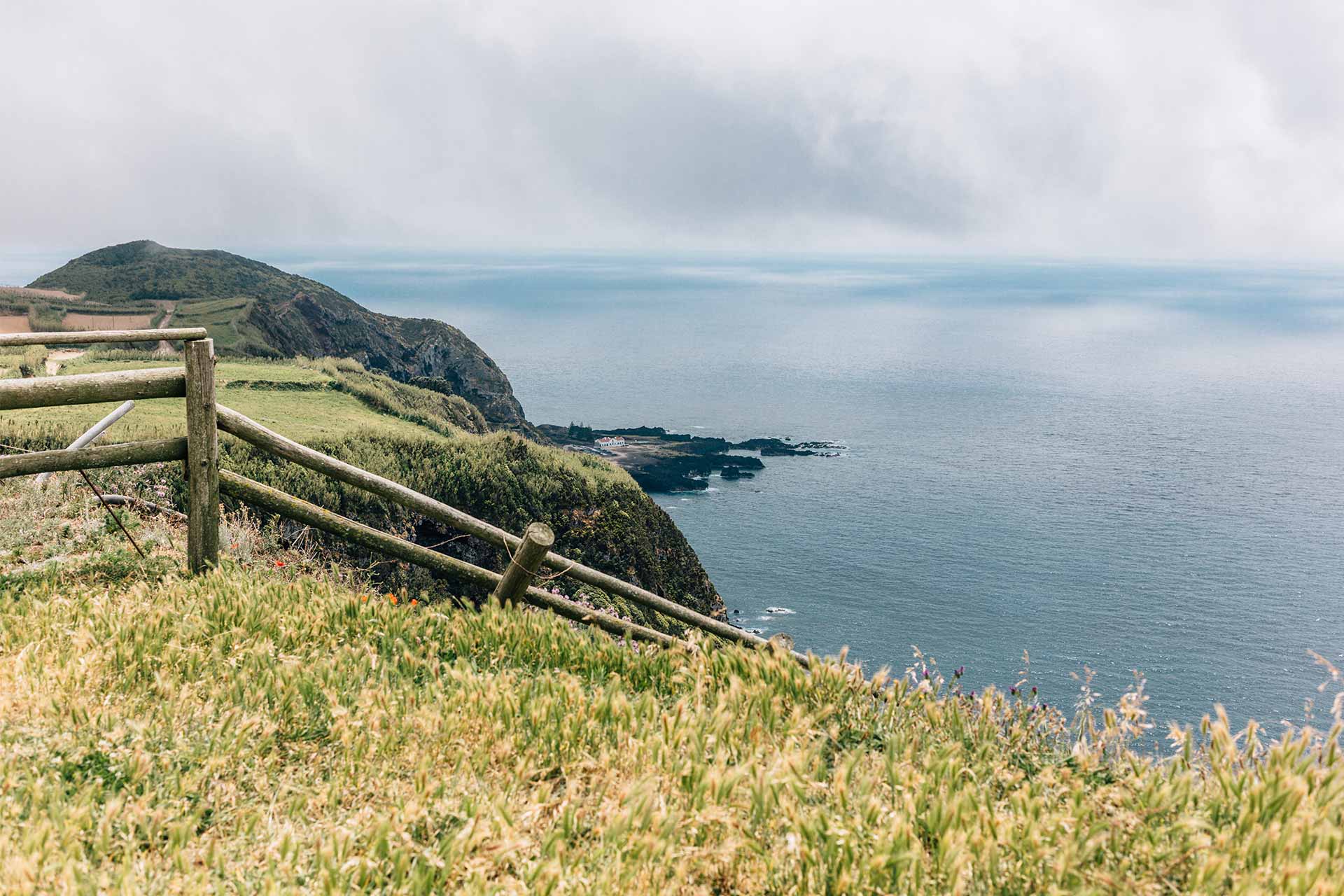
At Miradouro da Ponta do Escalvado, many people stake out for whale watching. Going by boat is often the more reliable way to see whales and does not require binoculars.
May 28
Day 1
Arrival
Nicole started driving our car from the airport up to the first place we’d be staying: Ginetes. (I would later end up filling this car with diesel fuel ruining it’s engine but that’s another story for another day.) Ginetes is a small village north west of the main city of Ponta Delgada and is near the most western point of the island.
At this point, we only had a shred of sleep and a scrap of food. A long layover in New York from San Francisco meant we were hungry and tired. We called the hotel: our lodging wasn’t ready for checkin, and at seven in the morning, even the biggest city in São Miguel was fast asleep. I asked Nicole to veer right and take the scenic road up to Sete Cidades, the “parish” town at the center of an ancient volcanic crater. We had time to kill.
It’s quiet today. A few cars pass us on the road. We roll down the windows and the chilly air smells of pine and eucalyptus. Nicole gladly stops to take photos. By our eighth day on the trip, stopping for photos will become a bit of a chore, but the views never lose their beauty on the island: sometimes it is better to just enjoy with the eyes.
The crater of Sete Cidades has a large lake in the base where a bridge splits it in two. White wildflowers blur into wisps of white clouds filling the turquoise skies as they fade into the green mountaintops. The mountains slide right into the mottled green and lapis lake water. The locals convince us that the lake is two different colors split by the bridge.

When you arrive to Lagoa do Canario, you take a short wooded trail to a small lake, which is secluded and not visible from the road. If you go along the main path, you eventually reach the most famous vista in the Azores: Miradouro da Boca do Inferno.
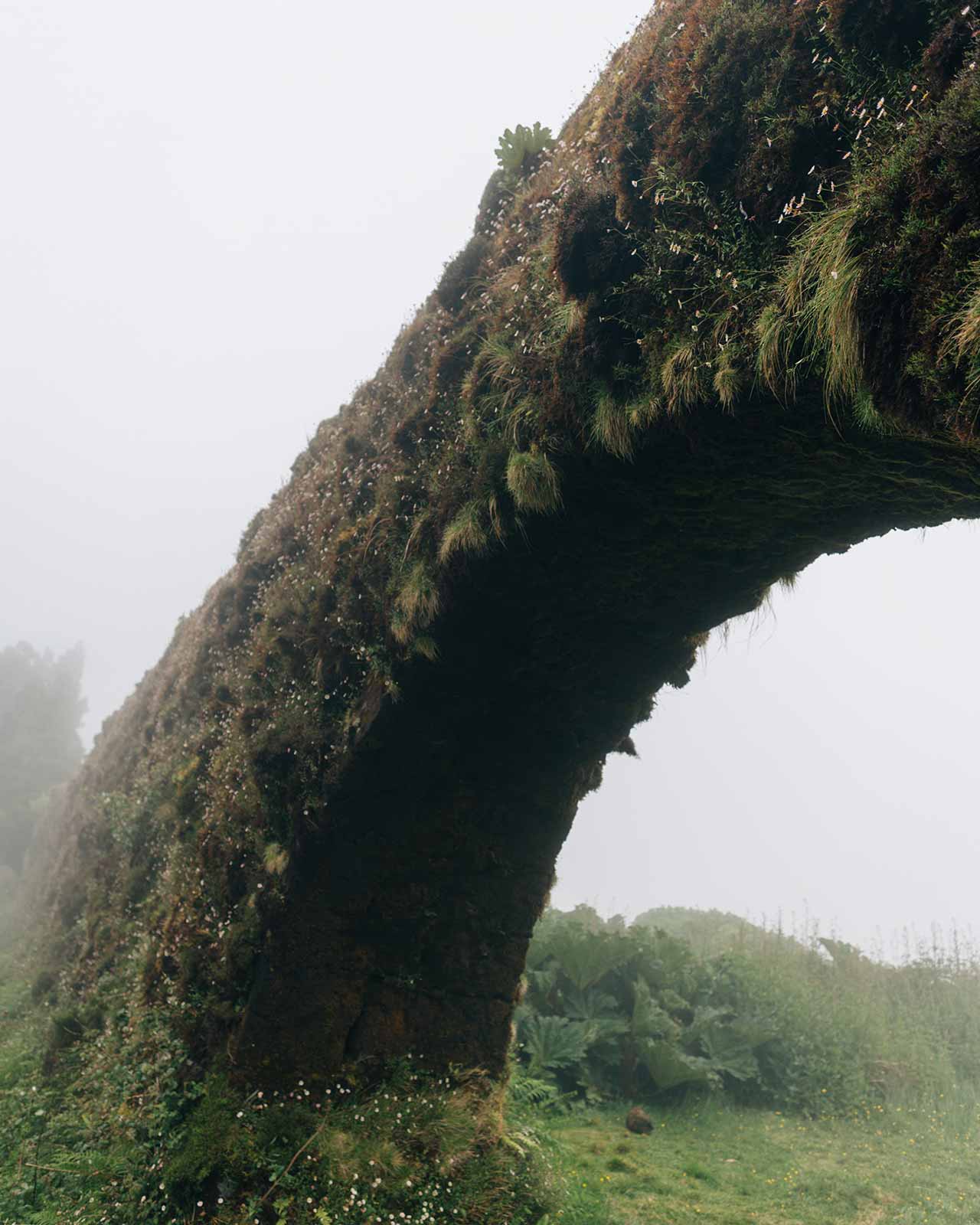
Only a few minutes away by car is the Coal Aqueduct (Aqueduto do Carvão), which is covered in beautiful plant-life. Don’t let the ancient look fool you: it is still in use.

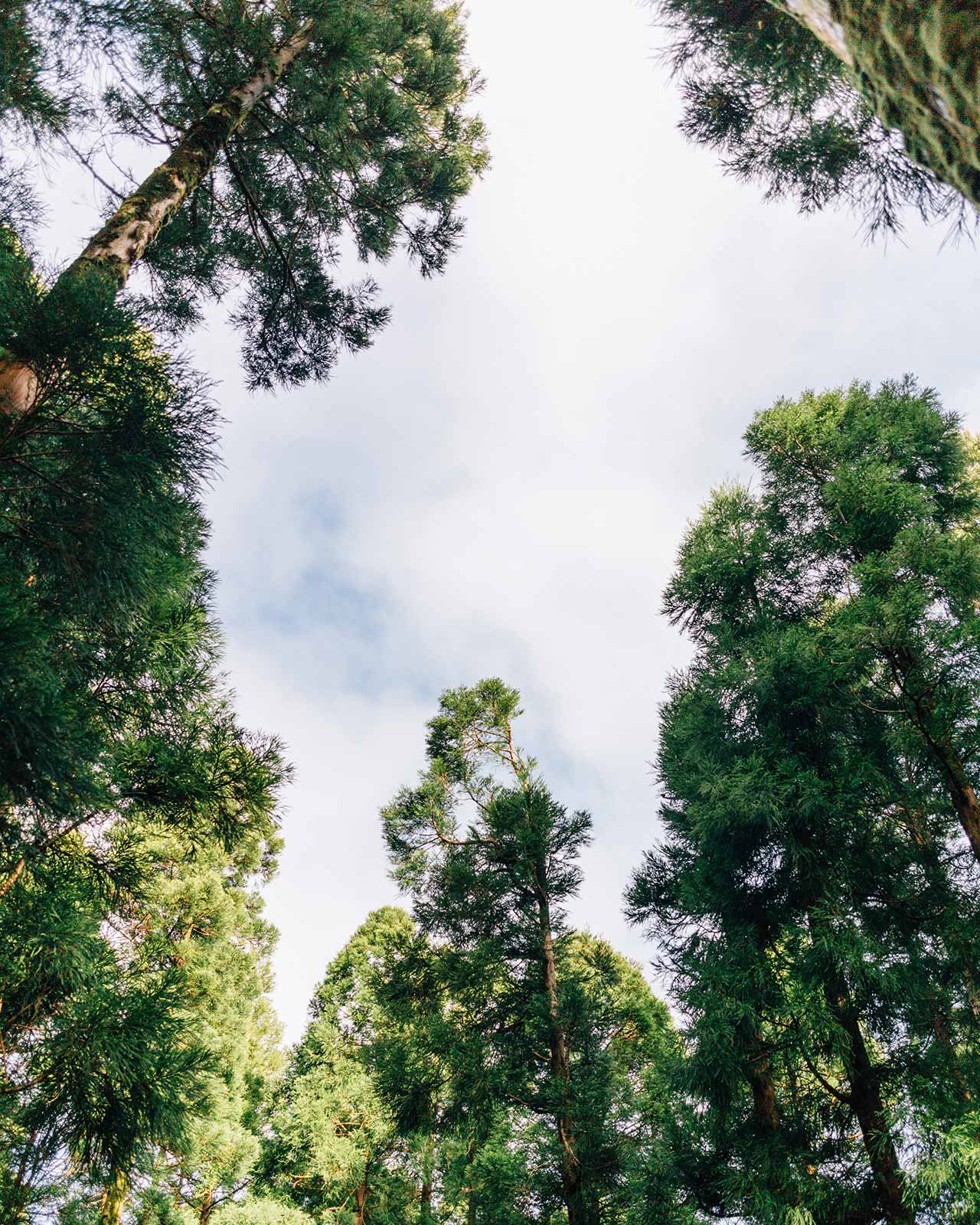
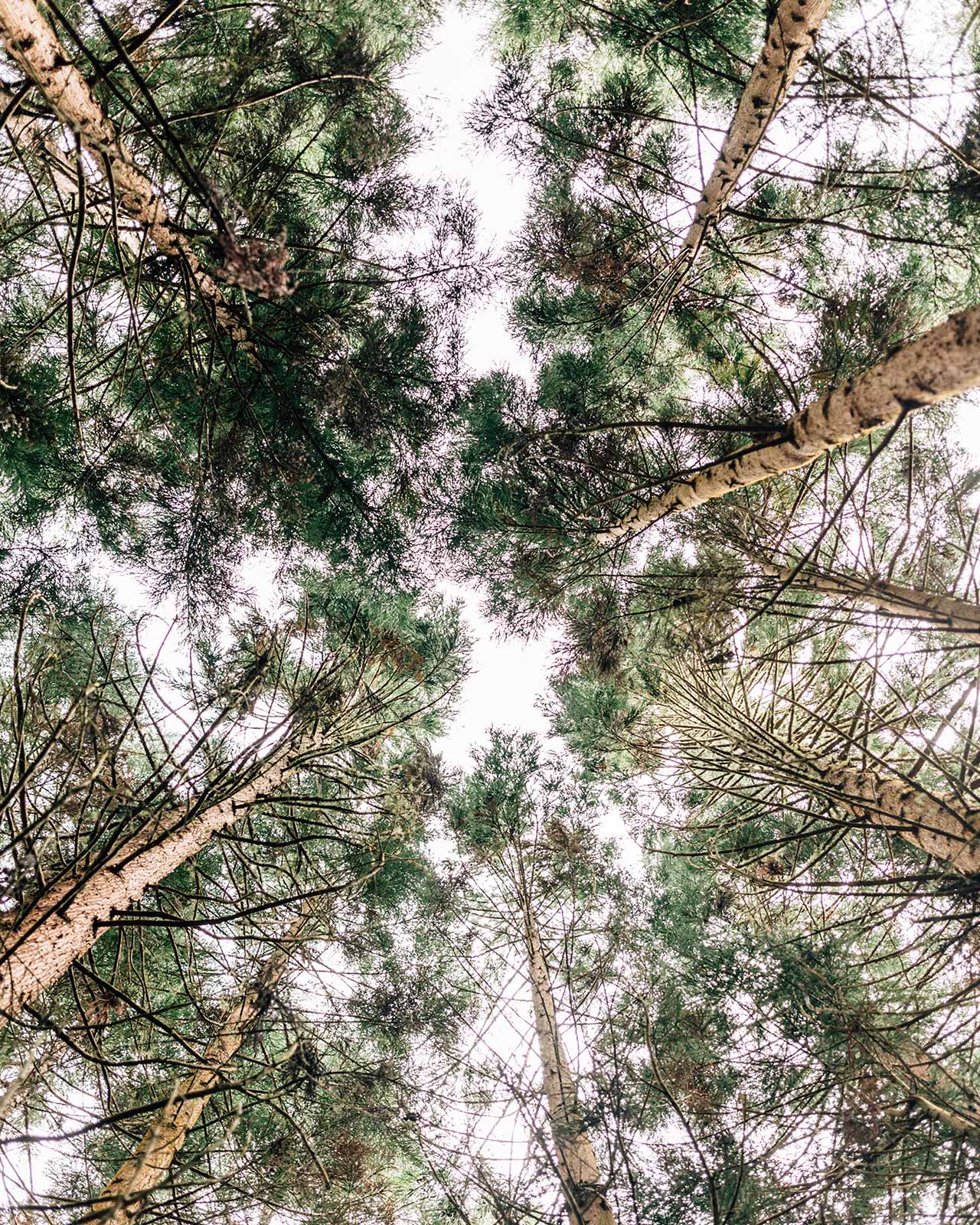

We park our car again looking for the most famous vista on the island (we tell ourselves we’ll see it later). And then a wrong turn into the woods. When we return here on our last day, the whole peak will be covered in fog. On the Azores, the best way to plan for the weather is not to.
As we drive, the elevation and vegetation change dramatically within minutes of distance. We park our car in a lichen-soaked patch of land flattened by the constant wind at this elevation. My feet sink into the spongy surface, and I fear I was destroying it. When we turn deeper into the woods, the sky is blocked by the thick forest cover. I look up: these were conifers I had never seen before.

View of Sete Cidades. Plant life on the island is diverse: conifers and pines, palm trees, moss and lichen, tropical plants, and blooming flowers all mix freely. The island is famous for its planted hydrangeas which bloom in late May and June.
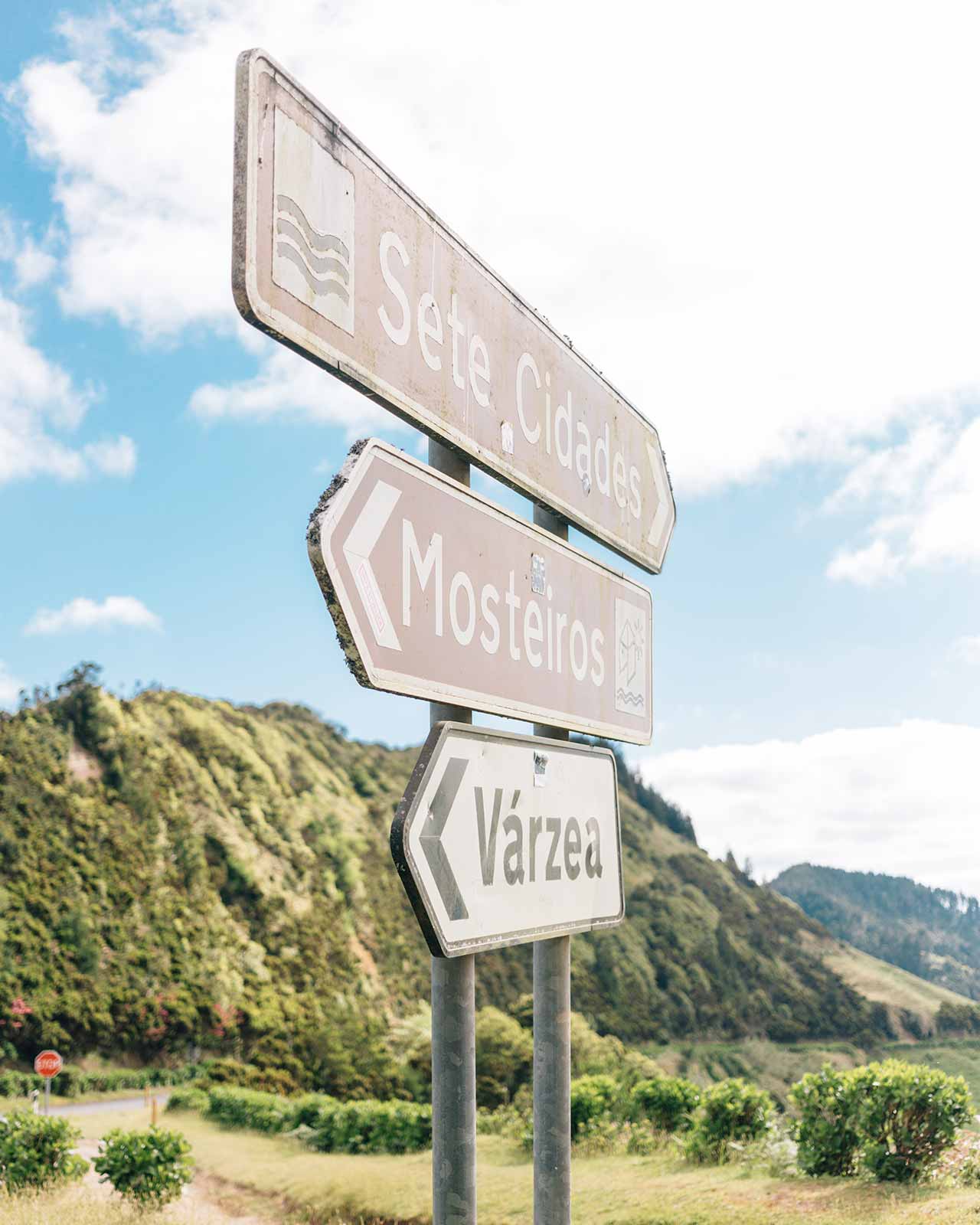
It only takes about an hour to drive from east to west on the island, and 30 minutes to drive from north to south. The small size makes is easy to move freely between places. It took us a little over 2 hours to drive most of the circumference.
We drive down the mountain of Sete Cidades — the views are always more impressive from above than below — and the town yawns as we pass through. We’re very much hungry and very much tired, but we are even more eager to continue onward.
The island of São Miguel is the biggest and most populated of the nine islands, which were all formed by volcanoes. But it struck us almost immediately, driving on the island, how small and intimate São Miguel was. You hardly need an hour to drive the length straight through and only thirty minutes at most to drive north to south. This makes it perfect to explore everything on the island. Our eight day trip was spent too much on one island, and next time it would be better to split time between the other islands.
We drove northwest towards the parish town of Mosteiros: famous for its sunset watching. At this point though, our room was ready and it was midday. We grabbed groceries in the town center; the grocery store owner and I both played the oboe at one point in our lives we figured out as we stumbled through broken Portuguese, English, and exaggerated hand movements.
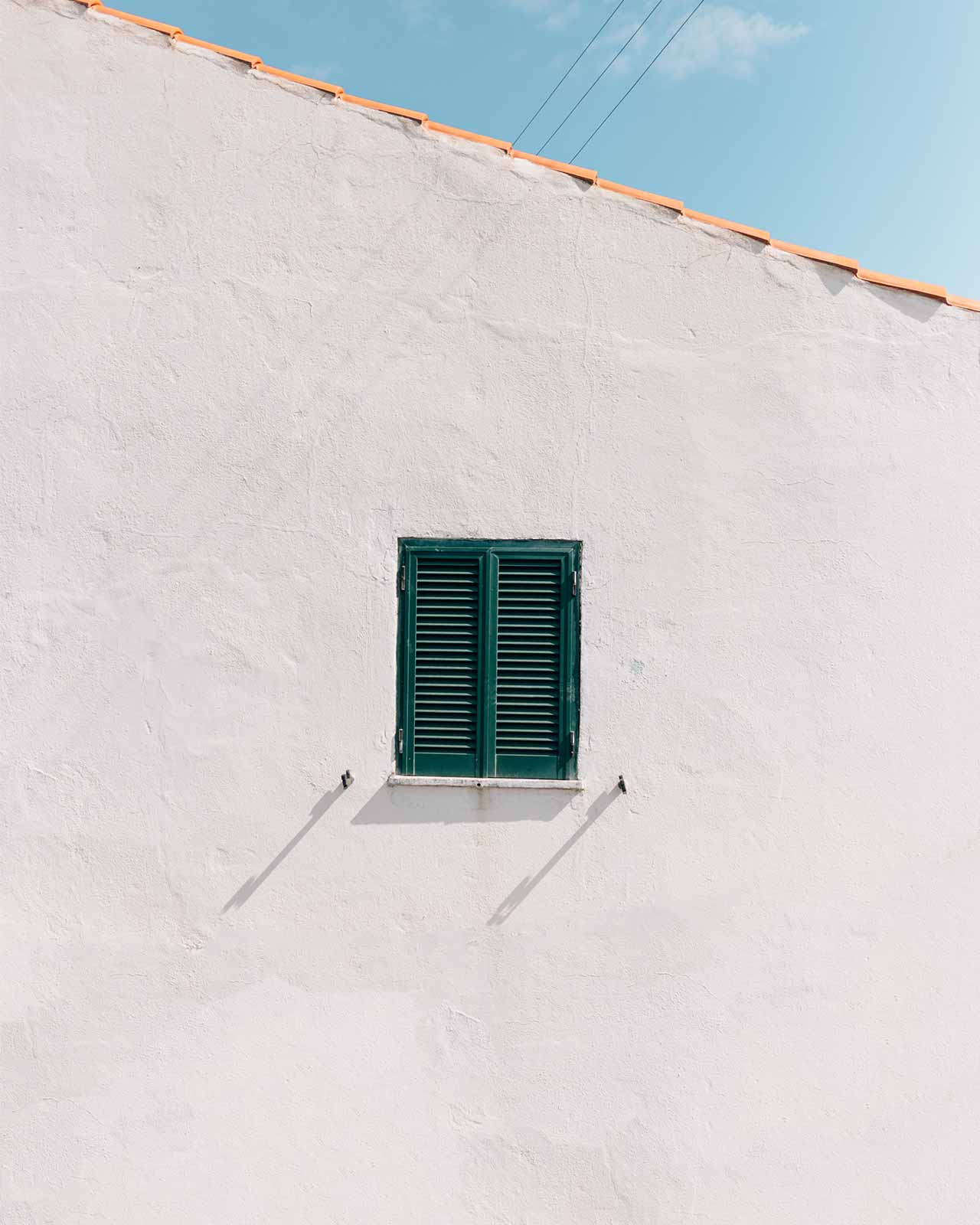
Azorean architecture is reminiscent of many places in the Mediterranean and Portugal: simple materials and clean lines with color to add joy.
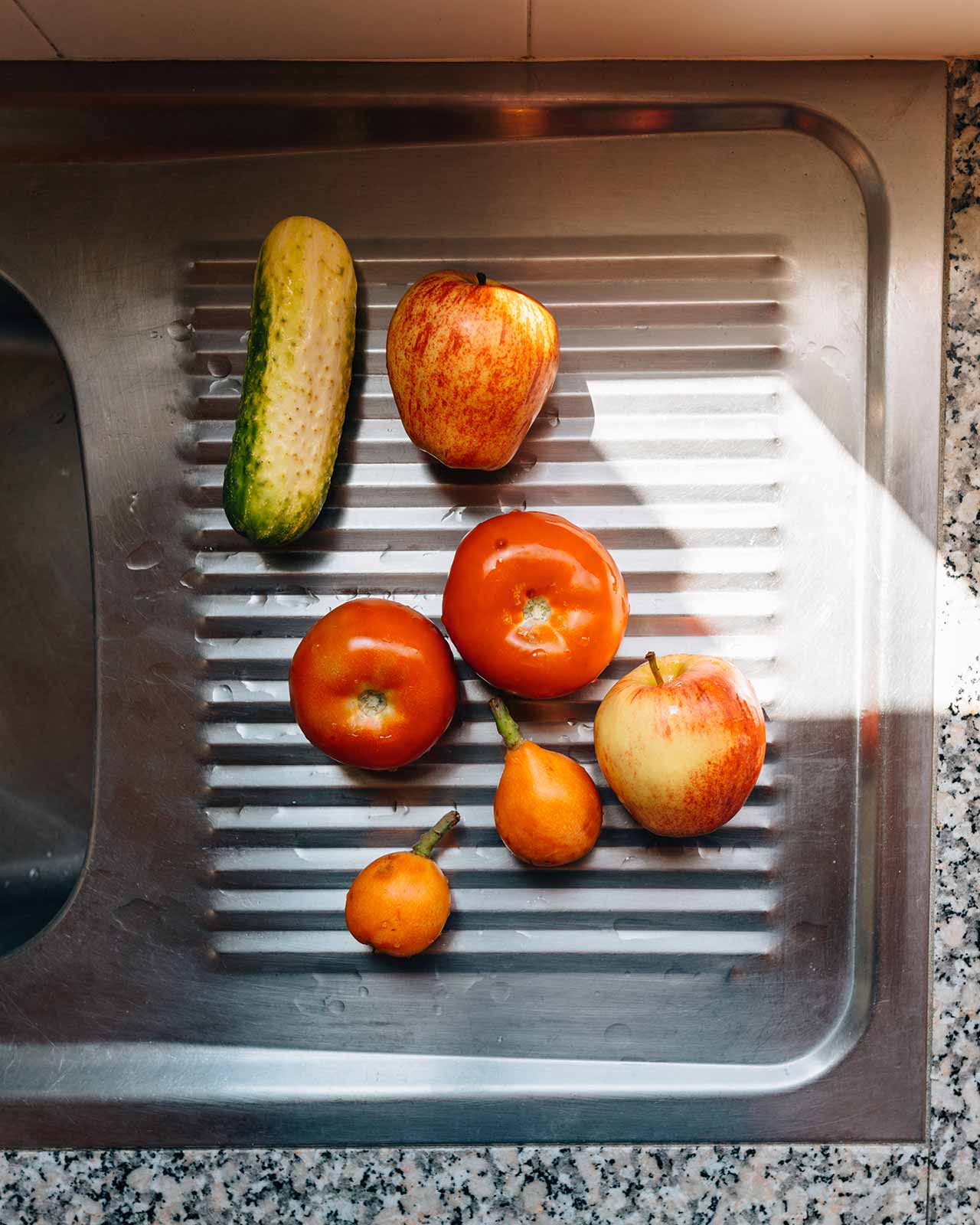
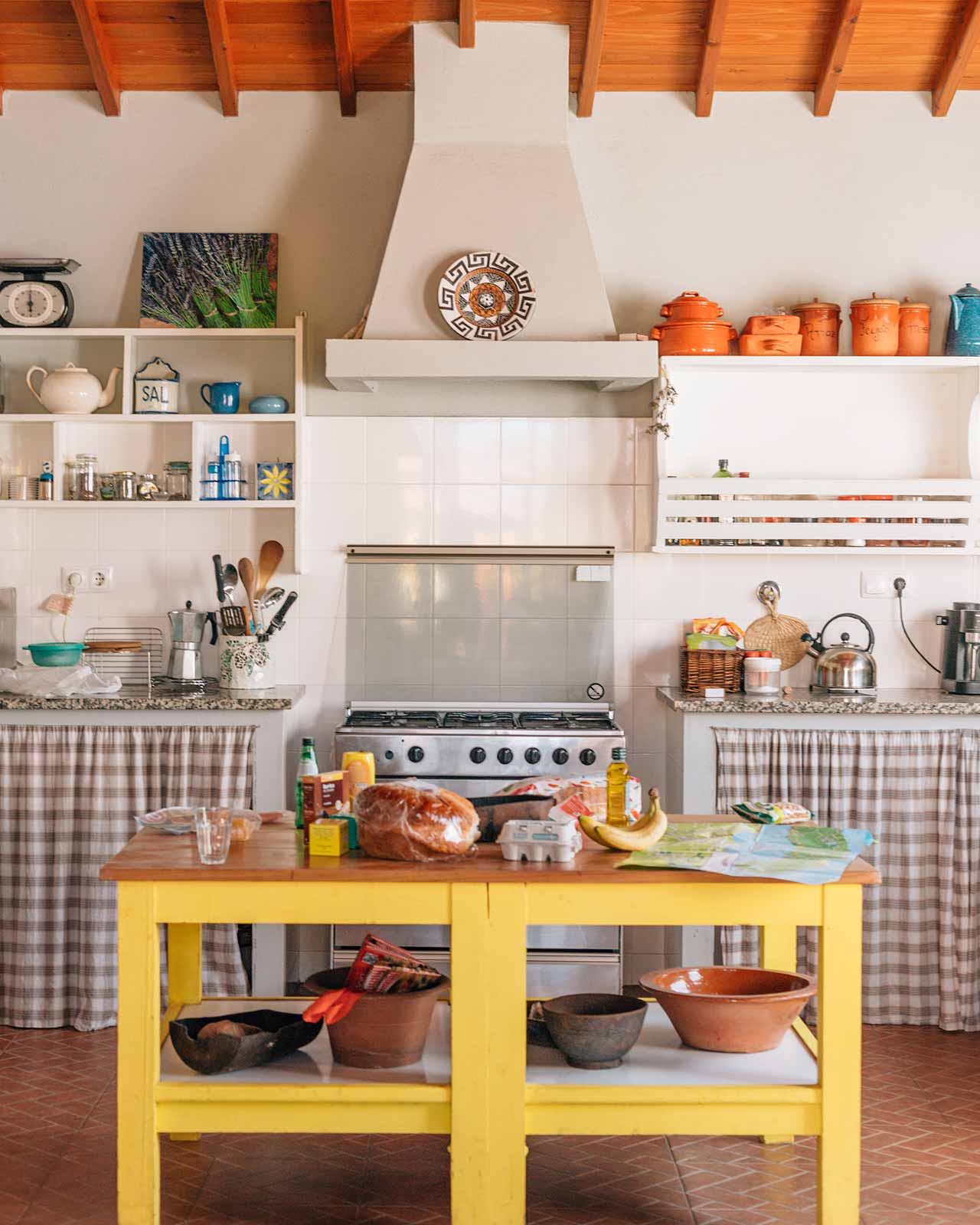
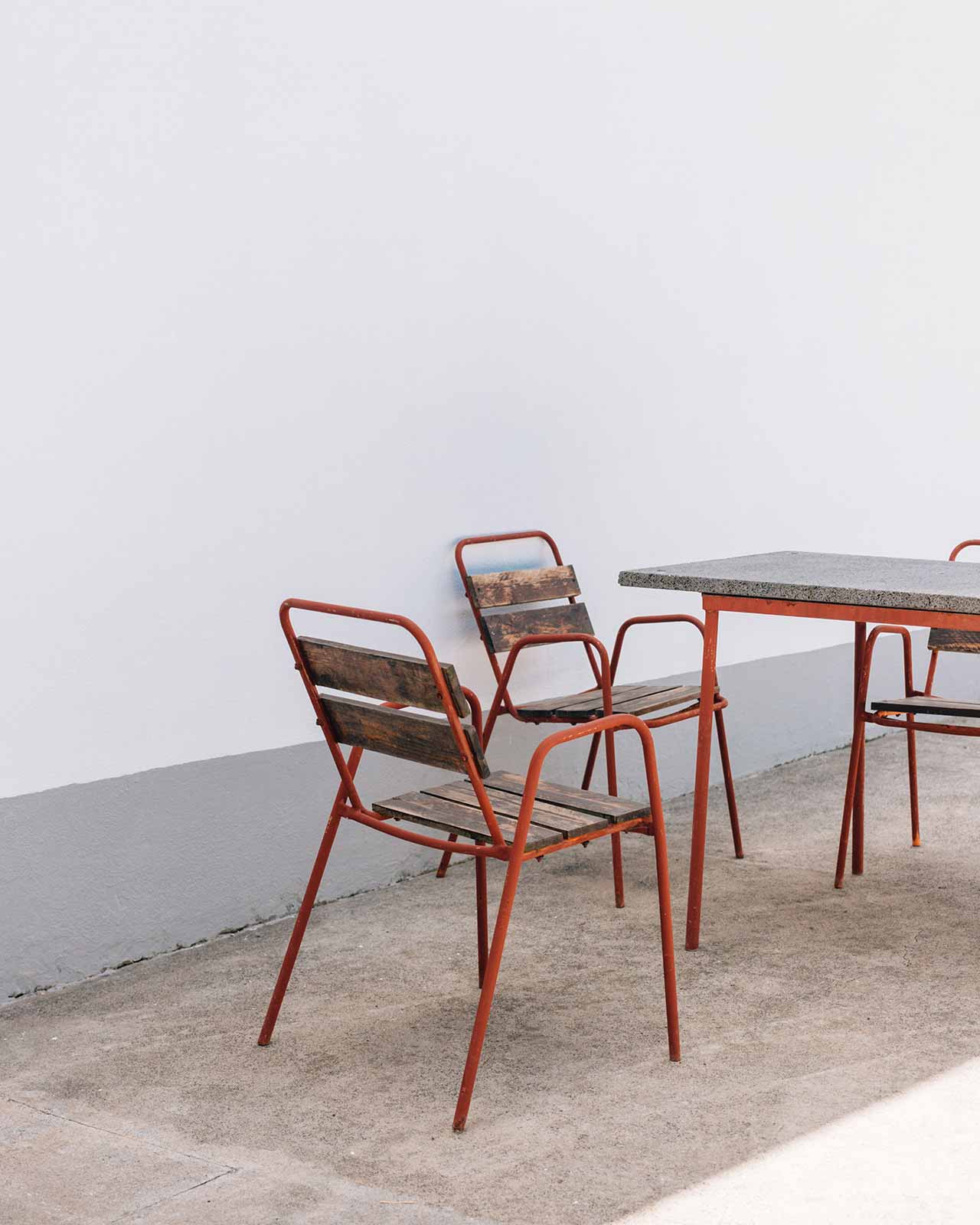
Our first lodging was an Airbnb located in a small parish area near the light house of Farol da Ponta da Ferraria. It had a small farm located on-premise.
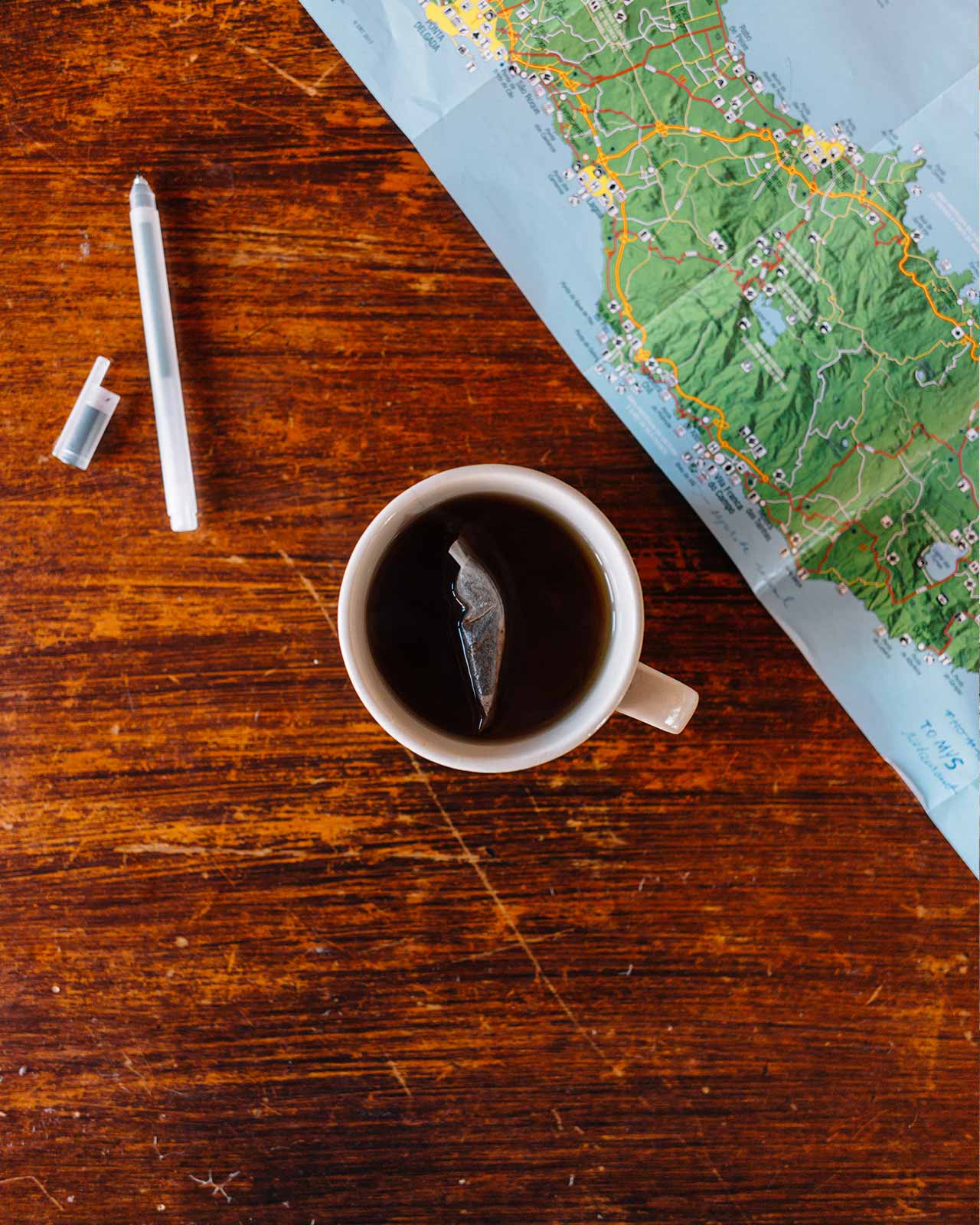
Rui let us into our rooms and went to work explaining his favorite things to do: eating pizza in Mosteiros and watching the sunset, swimming in the tidal pools (even though he couldn’t swim), visiting the islet of Vila Franca do Campo, where Red Bull hosts a show. I scrawled them in pen on the tourism board’s map we took from the airport. The house sits only a few minutes from the western coast near the lighthouse of Ferraria, built in 1901, and we wandered over there once we ate a snack of eggs and bread.
The sun is marvelous. It’s our cue to head back up to Mosteiros and catch our first sunset in the Azores at Poço da Pedra.
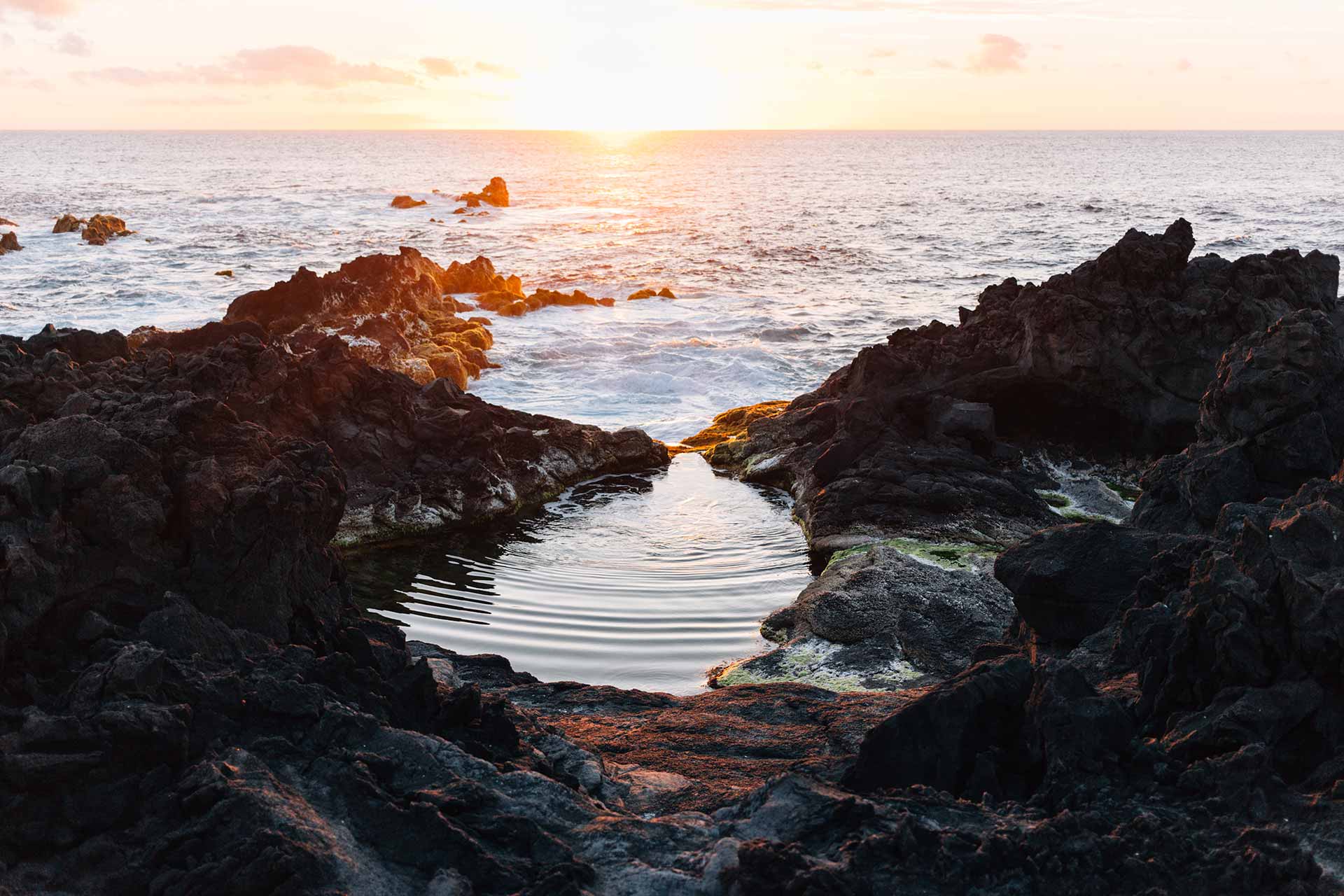
Sunset over the tidal pools of Mosteiros. There are stairs leading to the pools.
The clock turns to nine and the sun has disappeared for the day. We’ve only survived on snacks up to this point, and our hunger has passed acceptable levels of civility. Rui recommended Pizzeria Fantasia, and we walk in. English, French, and Portuguese float up the walls.

The aquaducts, still in use, are visible on the drive up to Sete Cidades.
“Reservation?” she asks as we scan the half empty restaurant. No, we reply. She finds us a spot. As the trip unfolded, reservations became increasingly important. The island is small and the dining options are limited. The reality is that most places take a very small number of walkins and reservations are essential. It’s an island and the locals enjoy a few top spots. With tourists visiting, as well, it is best to call ahead. In Ponta Delgada, walking into the handful of delicious restaurants without a reservation will be a sure-fire way to end up eating nothing for the night.
During dinner, we alternated between bites of pizza and glasses of rosé and stumbled out of the restaurant back into the cool, quiet night. The Atlantic broke against the beach-rocks, and we drove home.

Cattle, dairy, and beef are major products of the island and form a large part of the cuisine. Citrus was a main export as well until a major blight destroyed many of the crops.
May 29
Day 2
Ribeira Grande
Adjustments had to be made. My original itinerary focused on one part of the island per day, but we quickly found out yesterday that we could do much more without worrying about doing too much. It was perfect.
We decide to drive up the north coast: leaving Ginetes, we head up through Bretanha, Ponta da Costa, Santa Barbara, Capel, and countless other parish towns to finally stop in Ribeira Grande. That is where dinner is tonight. We zip through each place rather quickly: Azorean architecture unfolding through the narrow streets. A famous windmill here, a beautiful vista there, a weathered facade to our right, and a dark-trimmed church to our left. We’ve become professional sightseers. Should we stop and take a look? The answer is always yes.

Black sand forms from the naturally-occuring volcanic rock. The Azores are volcanic islands.
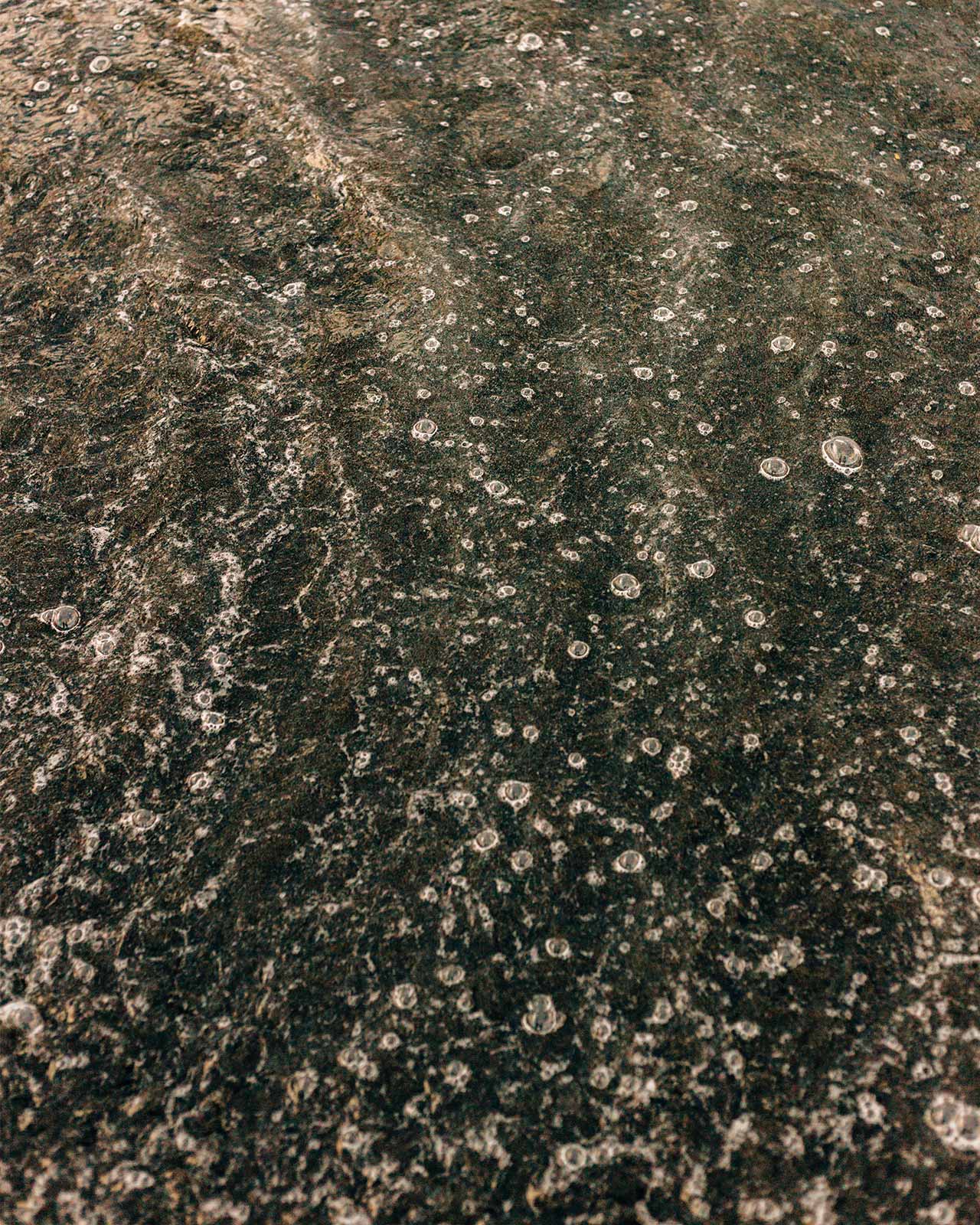
The islands are not known for their beaches and more famous for their inland nature and hiking. Even so, Ribeira Grande is a small but popular spot for surfers.
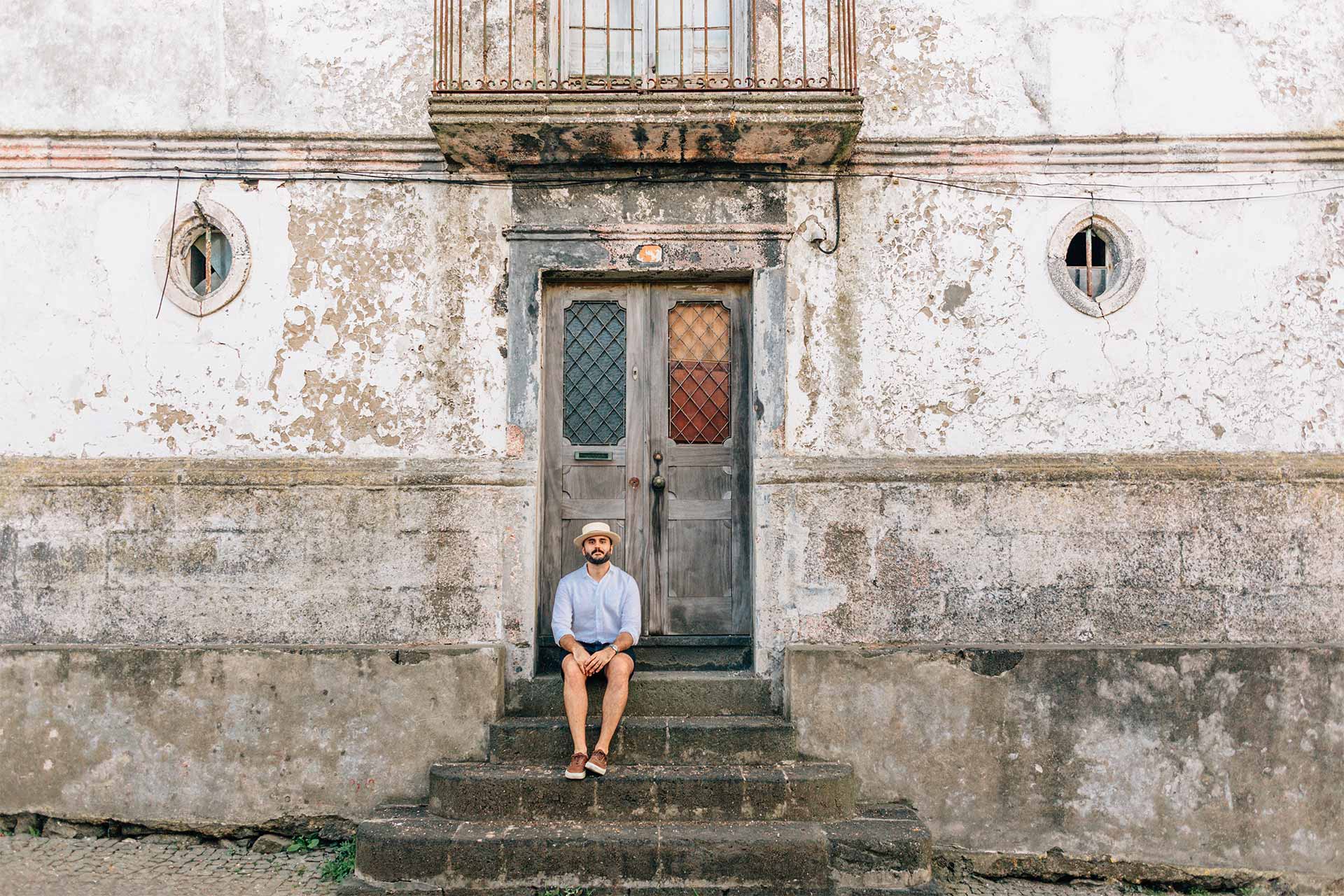
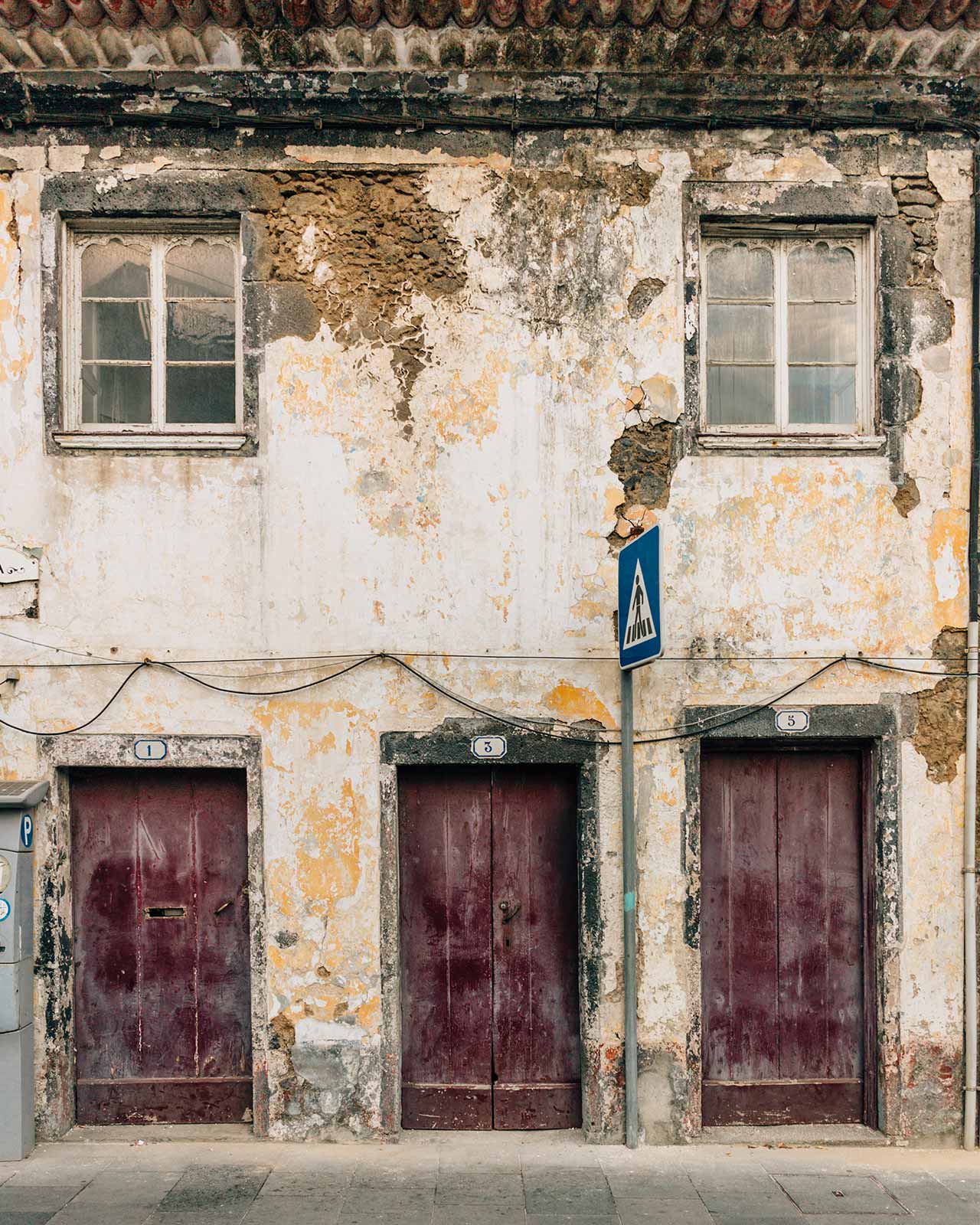
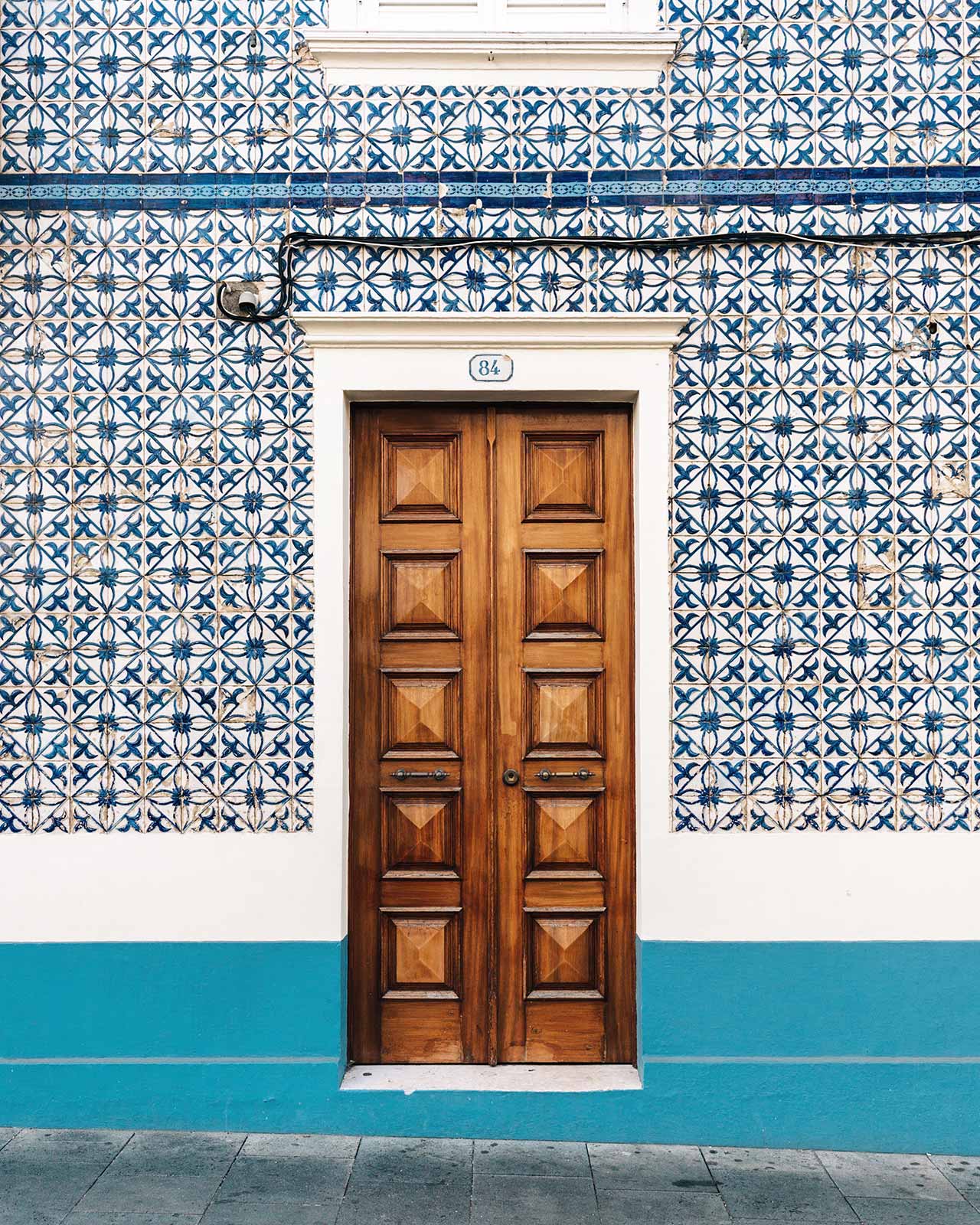
Most homes are painted but tilework is also popular. In Riberia Grande, I see more places decorated in tiles than other parts of the island.
Is this what retirement feels like? No boutiques to investigate, no must-eat restaurants, no museums to traverse, no lines, no tours, no traffic, no problems.
We ate dinner at Boca de Cena, and it became our most beloved meal.
We parked our car in Ribeira Grande as we drove from the western part of São Miguel to Furnas. Here we found one of the few sandy beaches on the island and a popular spot for surfing. I collected lava rocks from the beach, and we ogled at each new house façade we found. We polished off a drink at a nameless pub and found our way into the pastry shop nearby. The cake and custard tarts gave our wine something to mingle with in our bellies before dinner. As we drove away, surfers took to the waves, and I took a little bit of the dark sand for home.
May 30
Day 3
Lagoa
On our way Furnas, we decided to drive through Lagoa do Fogo via the city of Lagoa. We realized that the island was small enough that we could have stayed put in one lodging, but when we planed it, we booked three different places. Furnas was the middle of our trip.
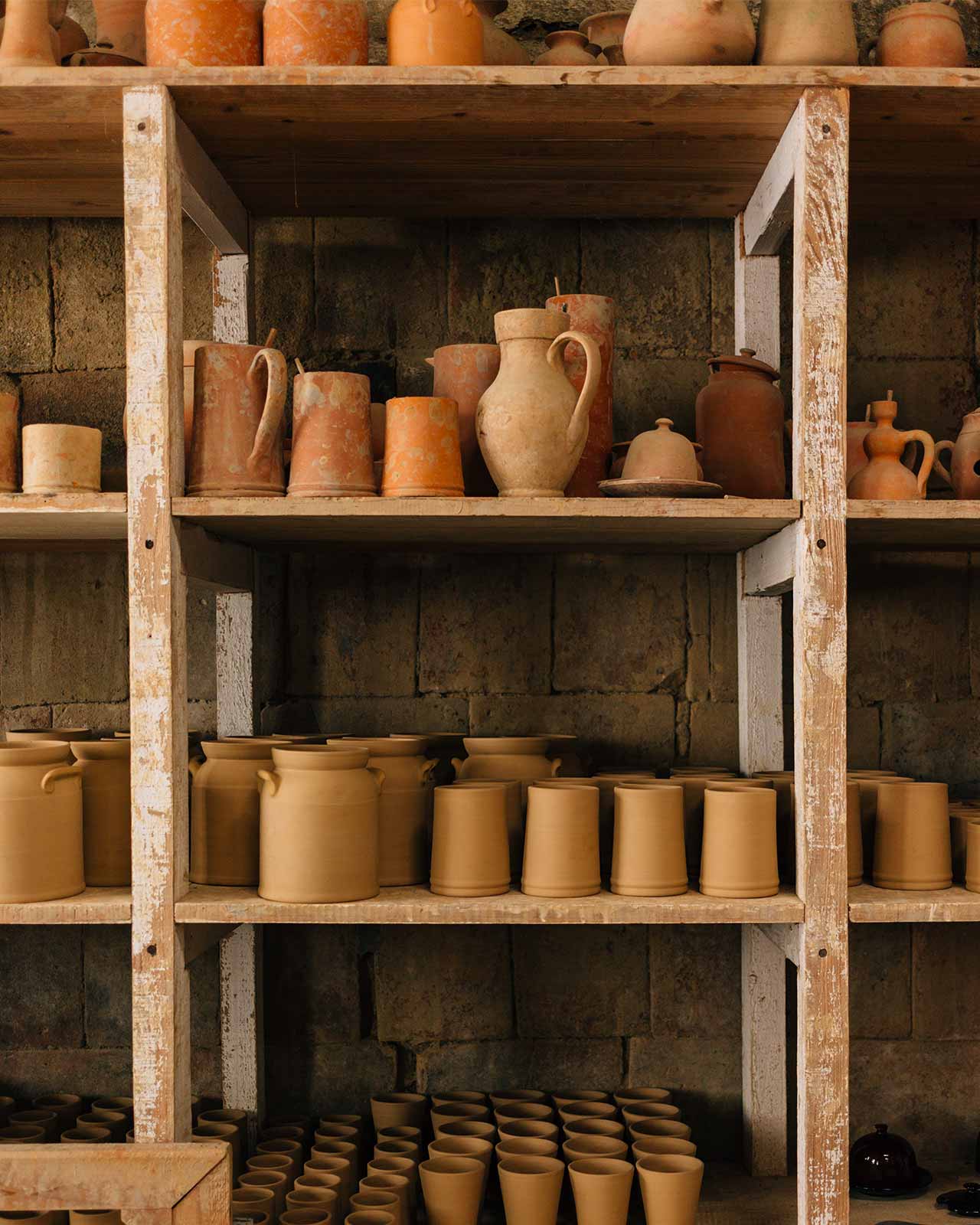
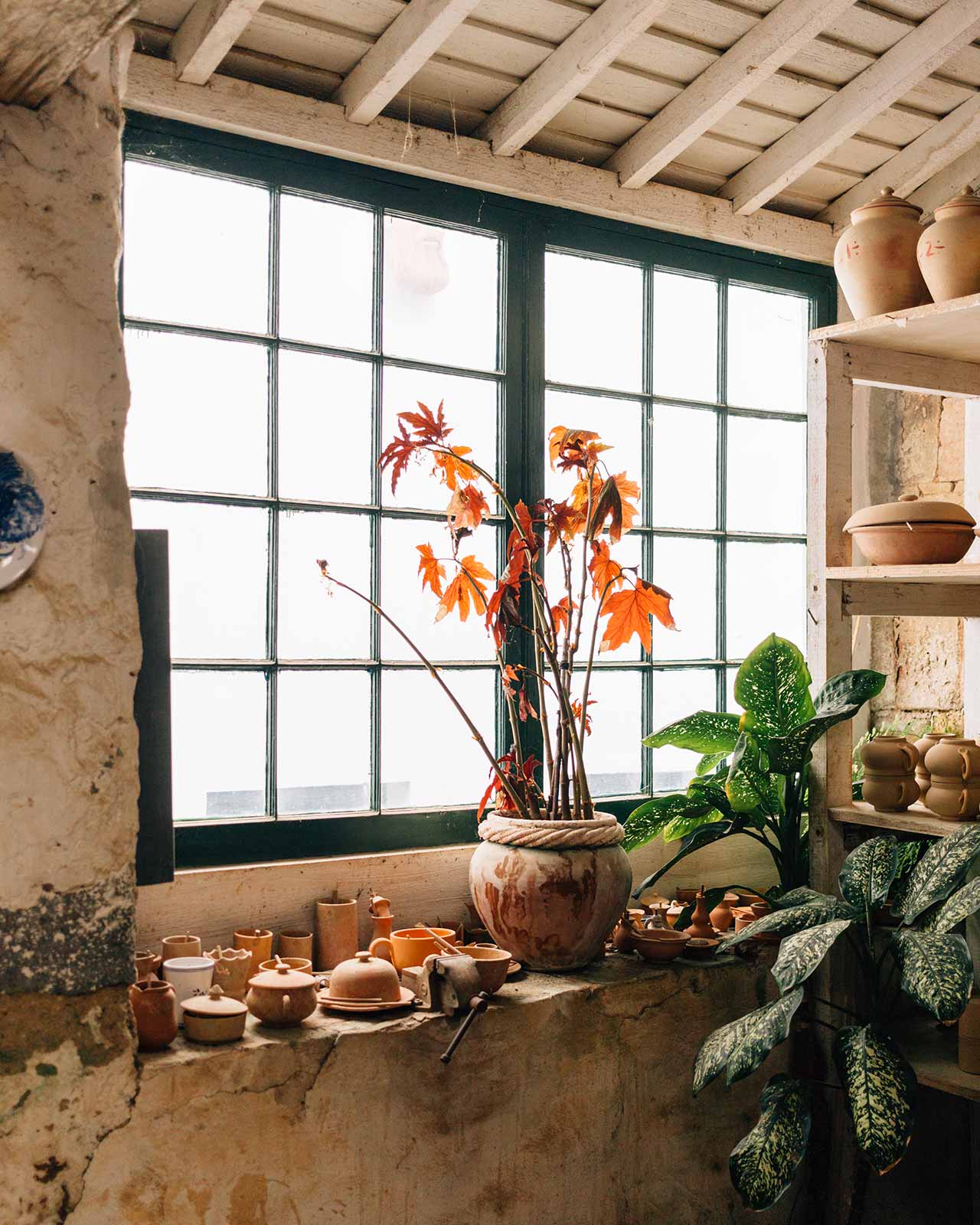
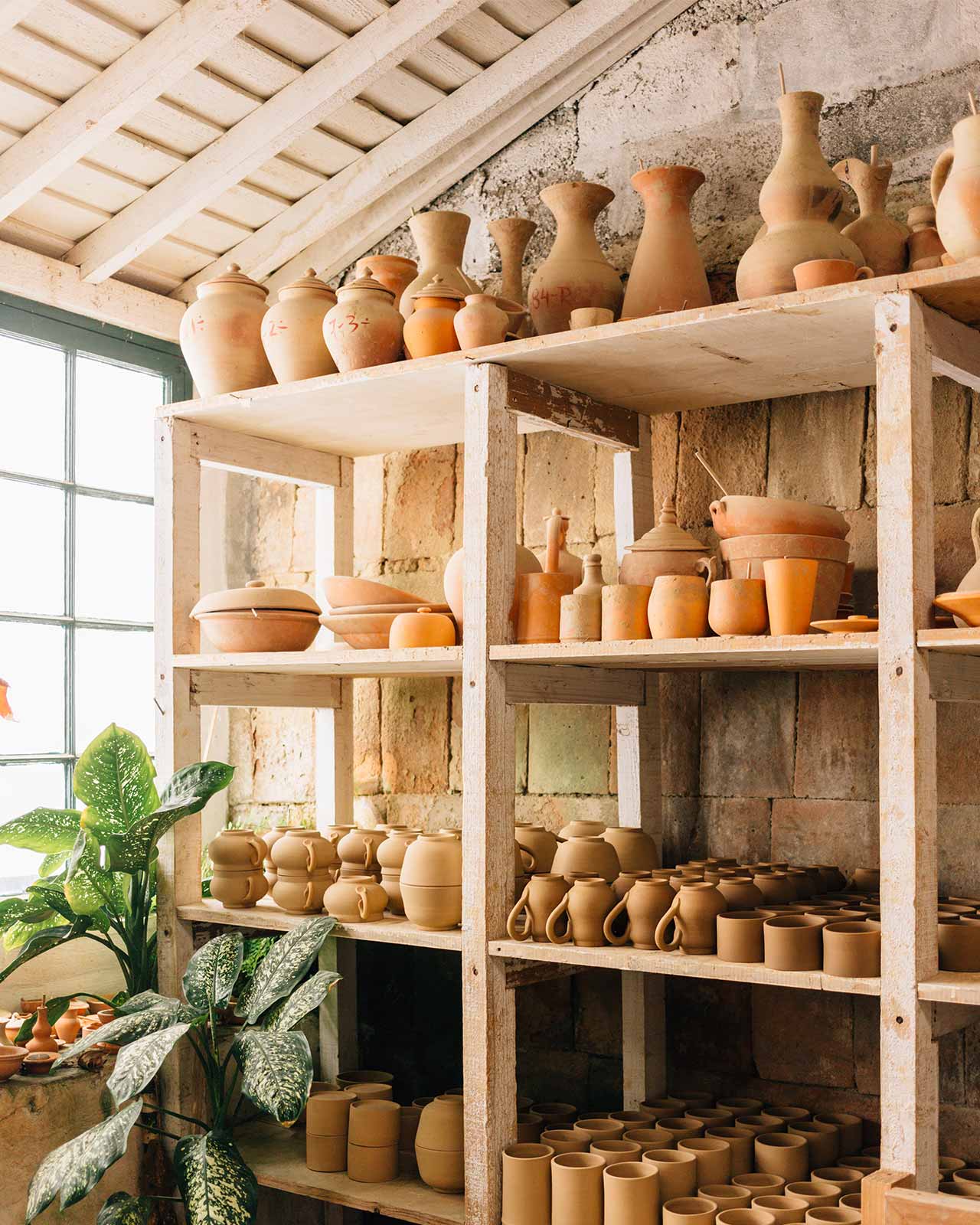
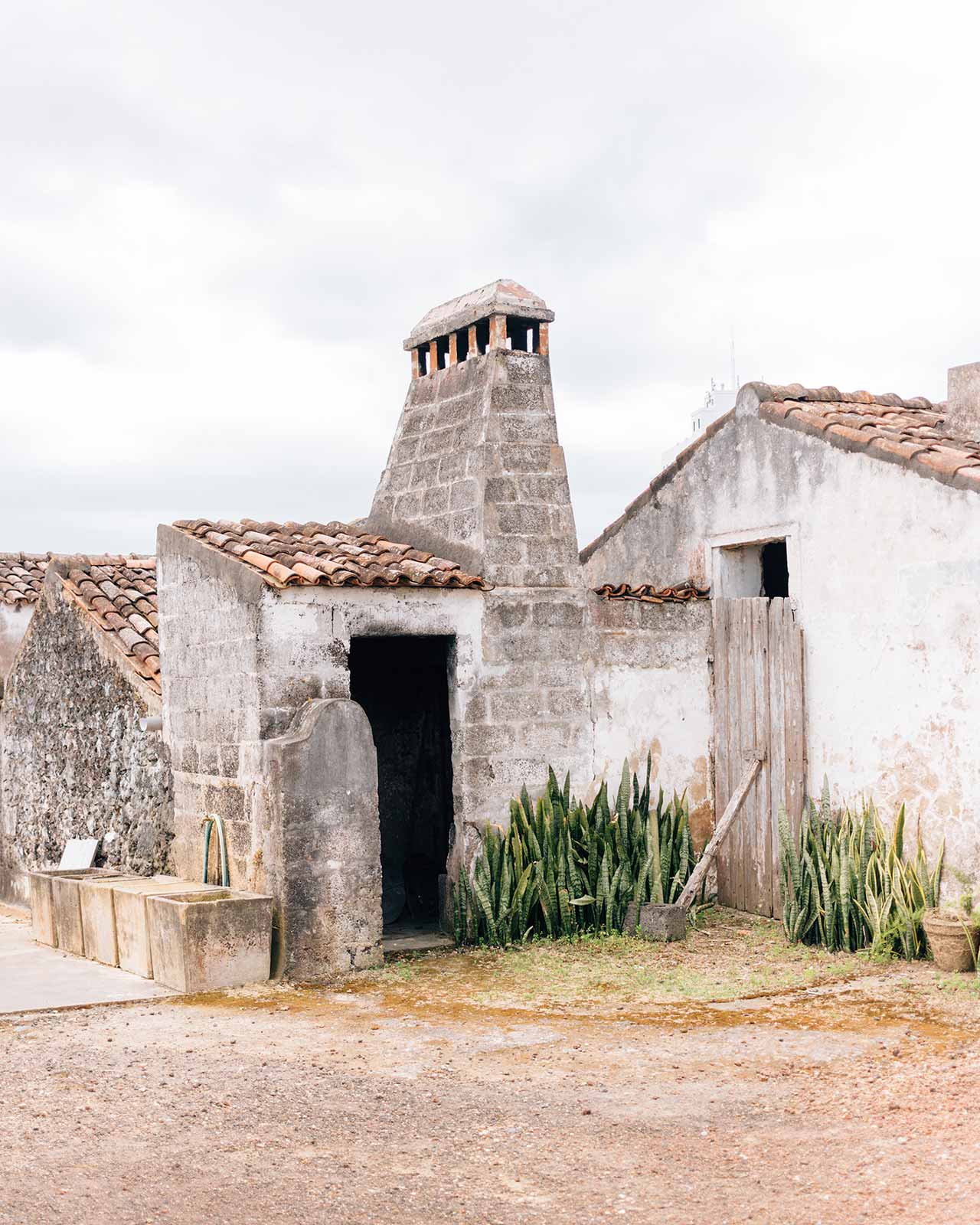

The workshops of Ceramica Viera.
On the paper map, there was a key for a ceramic workshop, which caught my attention. I guided Nicole as she drove to the spot on the map and we were in front of Ceramica Viera: the oldest continuously operating ceramic atelier on the island. It had been producing useful and decorative wares since the mid 1800s. The original kilns are no longer in use, but they have weathered marvelously, with rose bushes growing along their chalk-white sides. Next to them were the newer facilities where artisans still worked primarily by hand — from throwing the pots to decorating them in slip. And yes, we picked a few pieces for ourselves to take home.
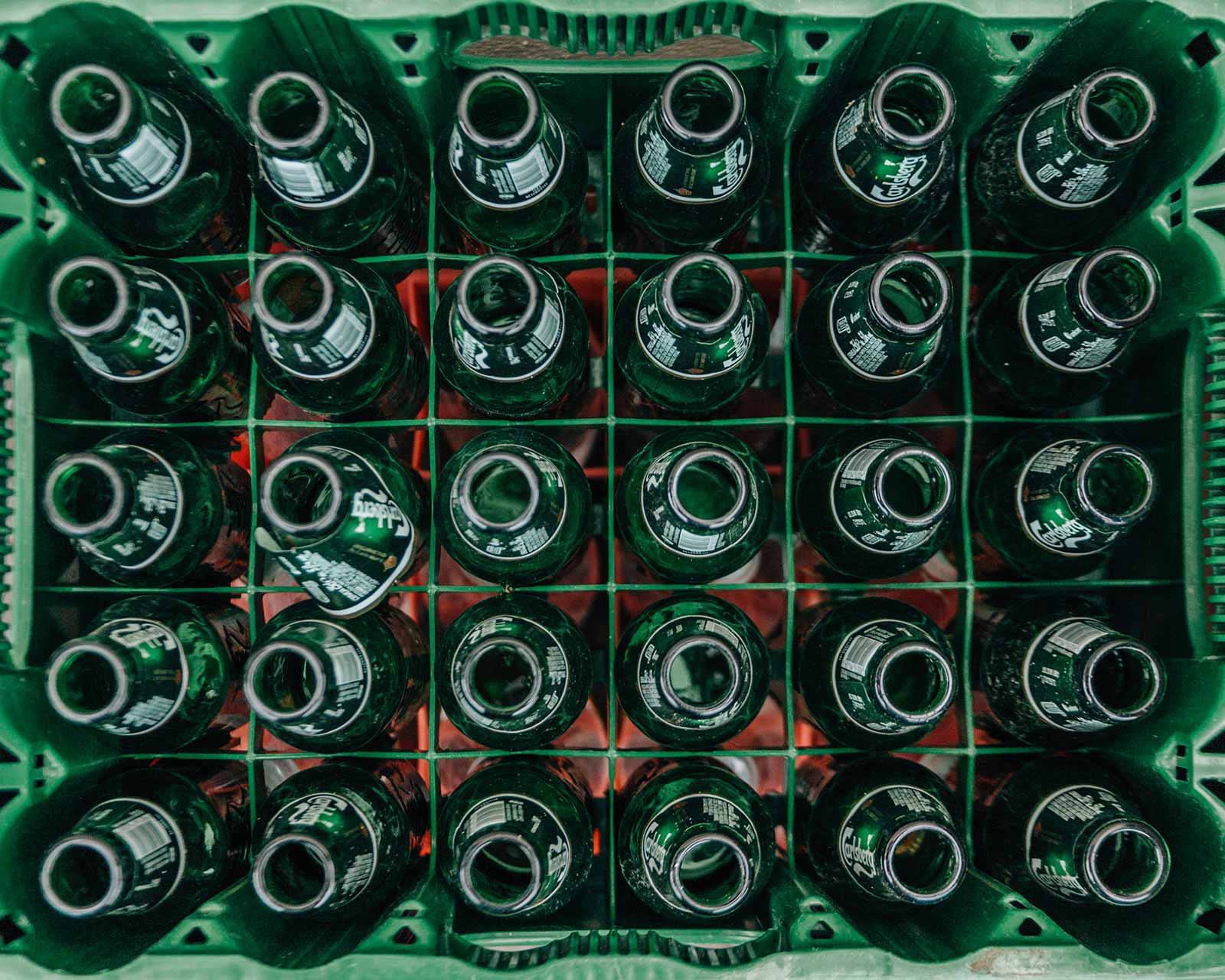
Nicole was feeling peckish and so we left the centro of Lagoa in hope of finding food. We heard a voice call us. Susan was perched at her second-story balcony leaning with elbows on the pine-colored iron work watching her cat attempt a jump. We waved hello — at this point we didn’t know her name of course. And she spoke back in English. Susan, after all, was from Long Island. She retired with her husband here a few years back. It was the weekend of Corpus Christi, she said, and people would be handing out bread and wine to passers-by. The streets were festooned with garlands, and we were quite ready ourselves to don our hats and knock on some doors for food at that point.
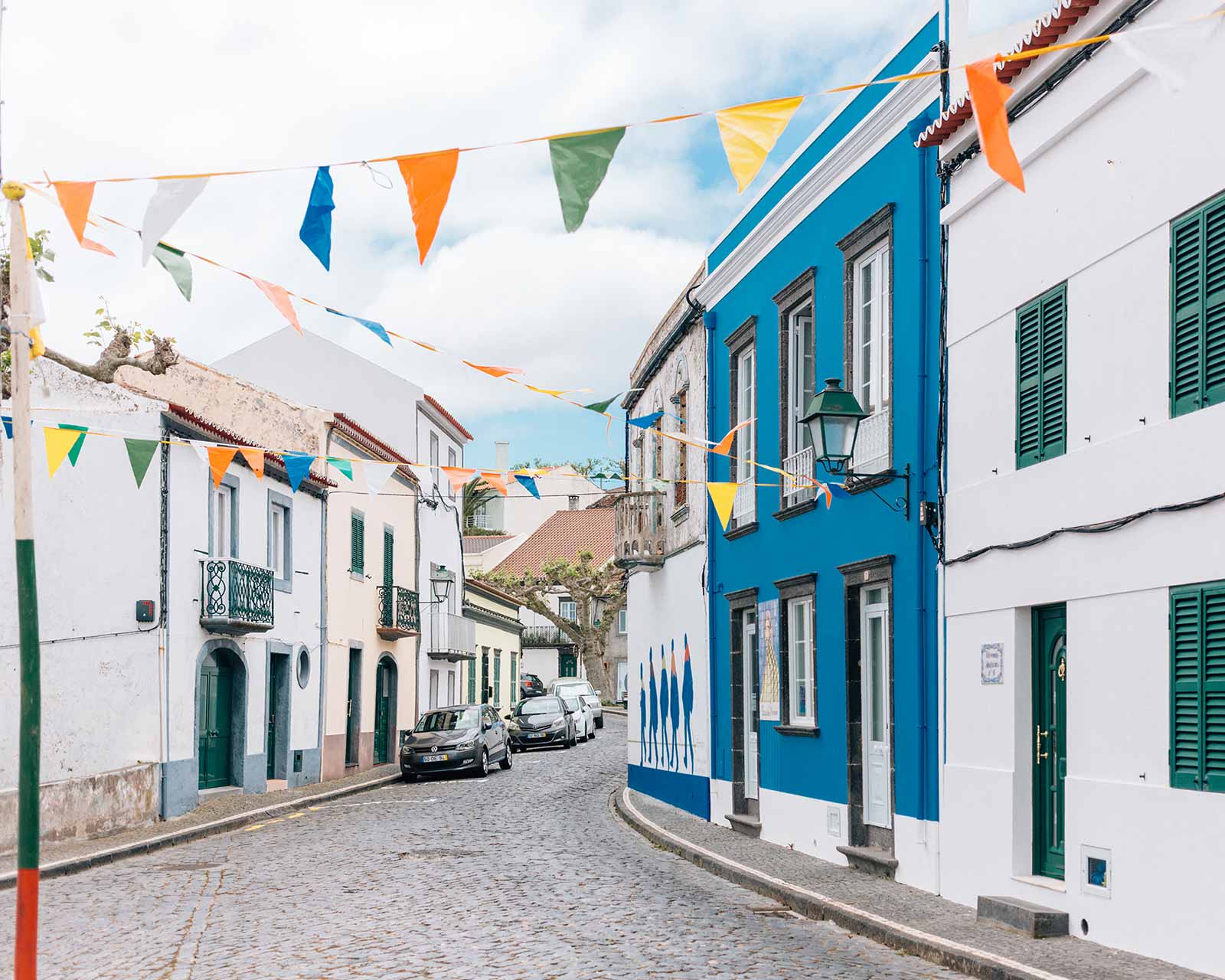
The town of Lagao on the southern coast of the island.

Portuguese tiles line many of the buildings, but simple white-wash is the most common wall-covering.
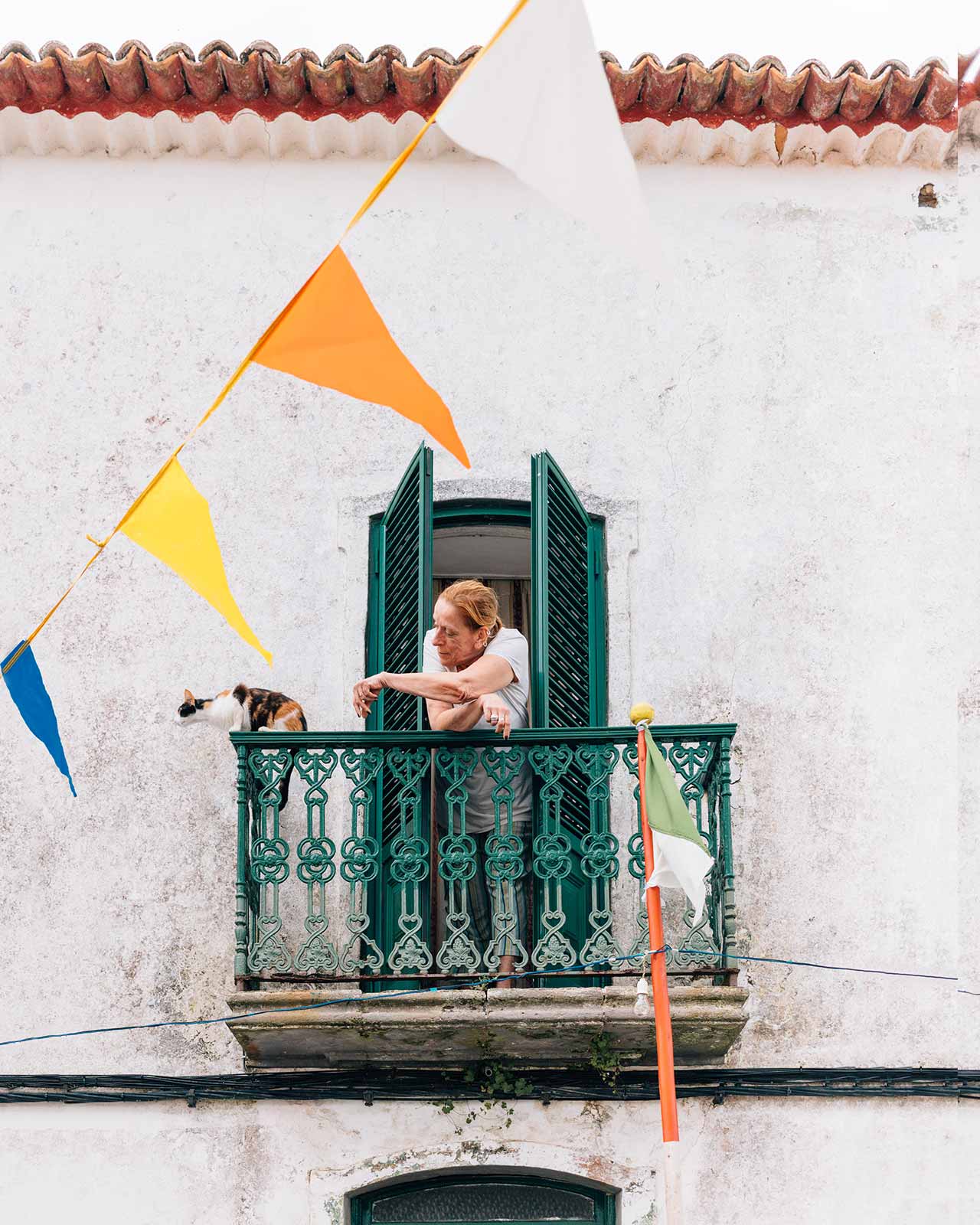
Susan and her pet cat she adopted when she moved to the island.
The cat never attempted the jump.
Nicole found her seafood soulmate at Borda D’Água in Lagoa. We would never get a chance to come back, but we picked a table outside that day and enjoyed the salty breeze from the ocean. The place was simple but crowded, and the food was impecable. As I drew my head back up to the sky, I remembered a fact: French iron work is always cast while English iron work is always wrought. Susan’s balcony was cast, so it was definitely from continental Europe and not England. Nicole snapped me back to attention, and we ordered dessert.



We left the restaurant, and drove up to Lagoa do Fogo. It is perched high up in a crater located almost in the center of the island. We didn’t take the trail down to the base of the mountain where the sandy beach wraps around a small lake. We would have to walk back up, we debated, and we had yet to make it to Furnas.
Furnas is a resort spa town closer to the eastern part of the island. It is a peaceful retreat within an already peaceful island, even though it sits on the most active volcanic spot within São Miguel. The air announces the city before you see it: mild sulfur permeates most of the city and it can reach alarming concentrations near the natural springs and geysers.
We dragged ourselves outside one more time to enjoy sunset in Furnas before the real exploring would begin tomorrow.
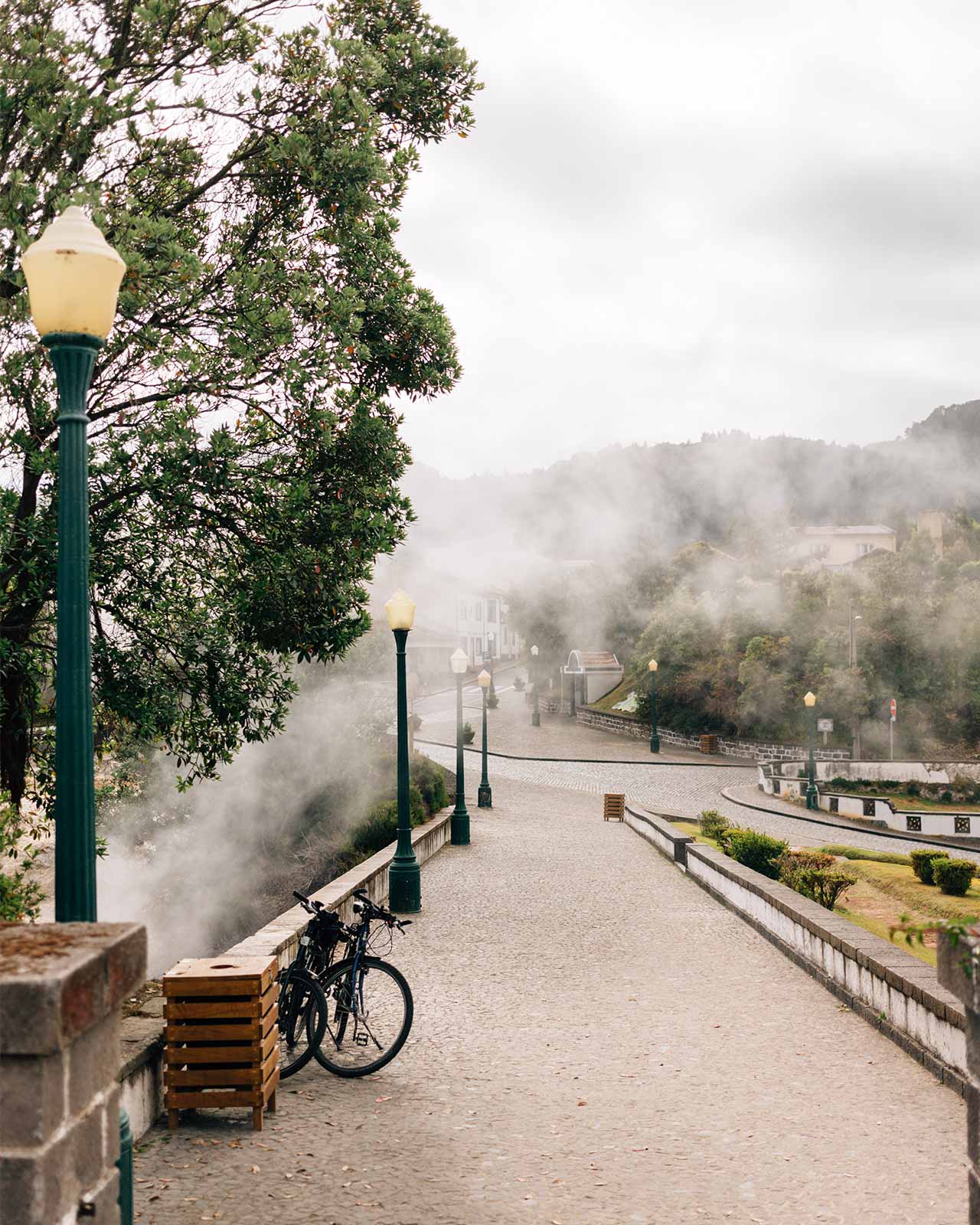
Furnas lies on the most active portion of the island and geysers freely intermix with the urban landscape.
May 31
Day 4
Thermal Waters of Furnas

Terra Nostra Garden has winding garden paths and is a small botanic garden easily walkable during the day.
Today was an official holiday: children would have the day off for communion and the hot springs would be crowded, the man at the lobby said. We had spent the greater part of an hour in our hotel room that morning preparing our “thermal pool” outfits, and this news left us undeterred. We walked from the hotel to Parque Terra Nostra, where the main public springs are located.
It was nearly empty, and we immediately slipped into the rust colored water. It felt like we had slipped into a warm pool of milk tinted with turmeric. Indeed, our skin, towels, and bathing suits became colored in orange from the water. It mostly washed out, but a dark towel would have been a much better choice than white. The hotel was not pleased when we returned with ruined towels in our hands.
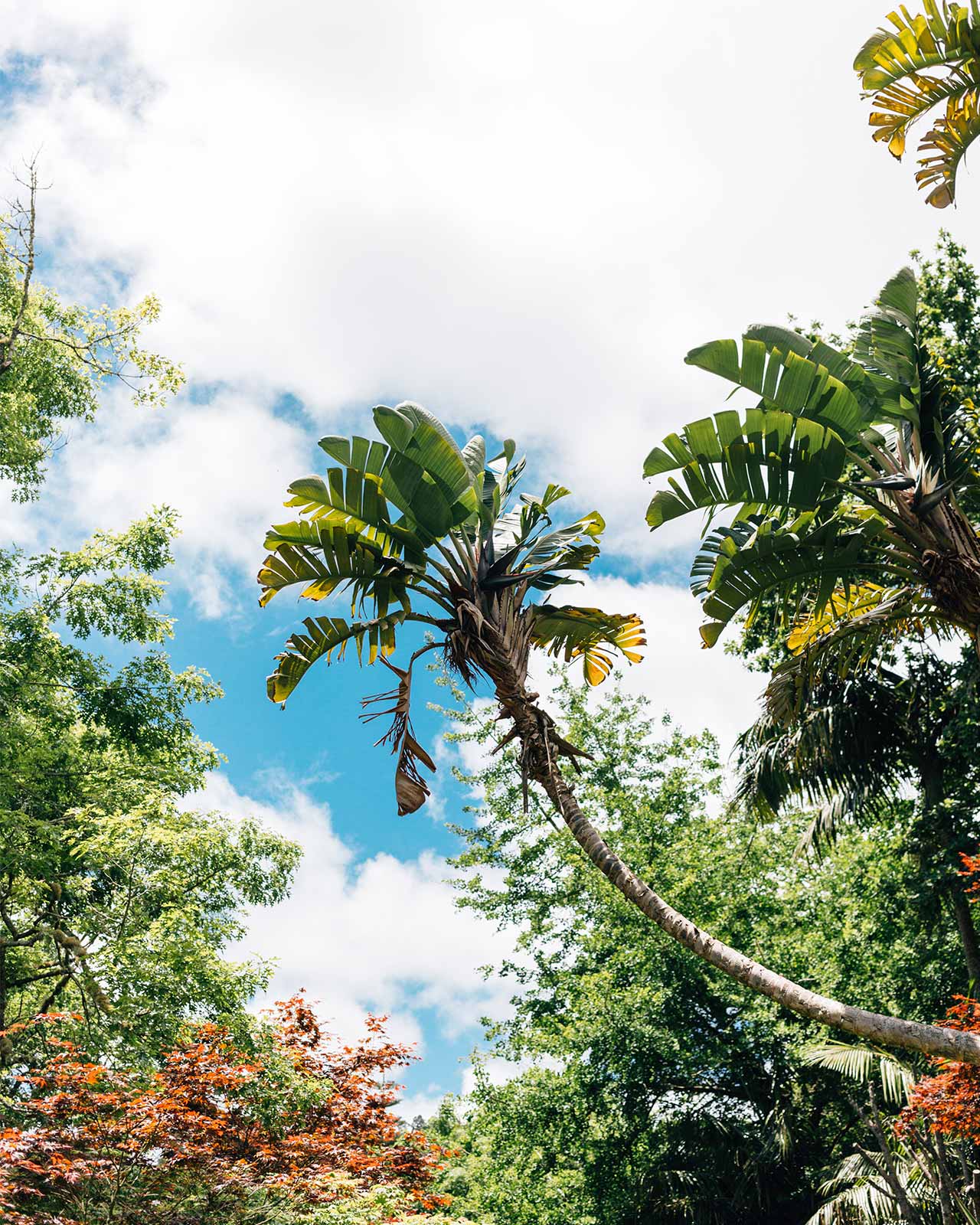
There is a small fee to enter Terra Nostra Gardens but it is certainly worth it.
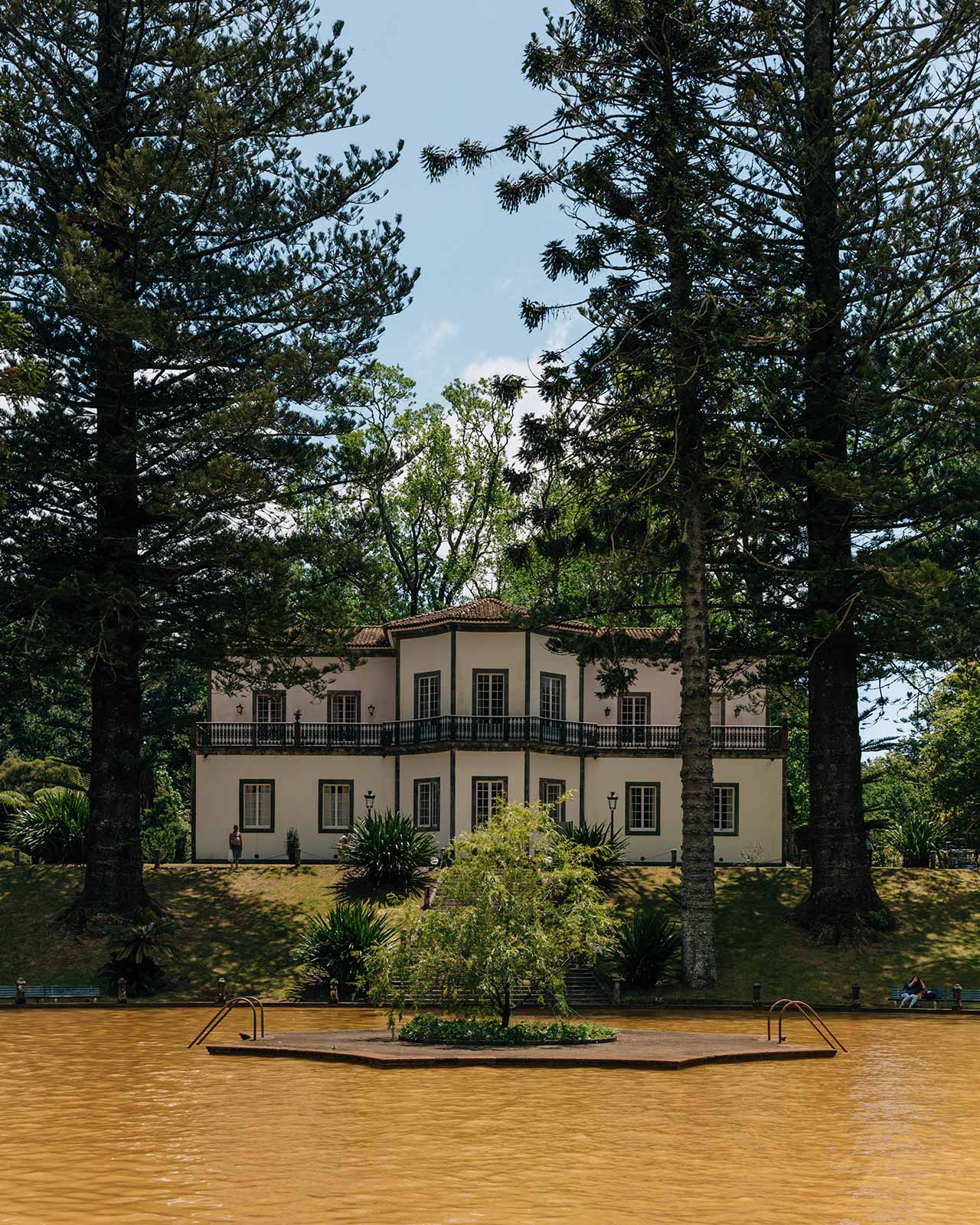
The sulphur pool is the most famous feature of the gardens. The pool itself is no more than four-feet deep and does not become too crowded until the afternoon. There are public changing rooms and showers near it. And of course, do not bring a white towel with you.
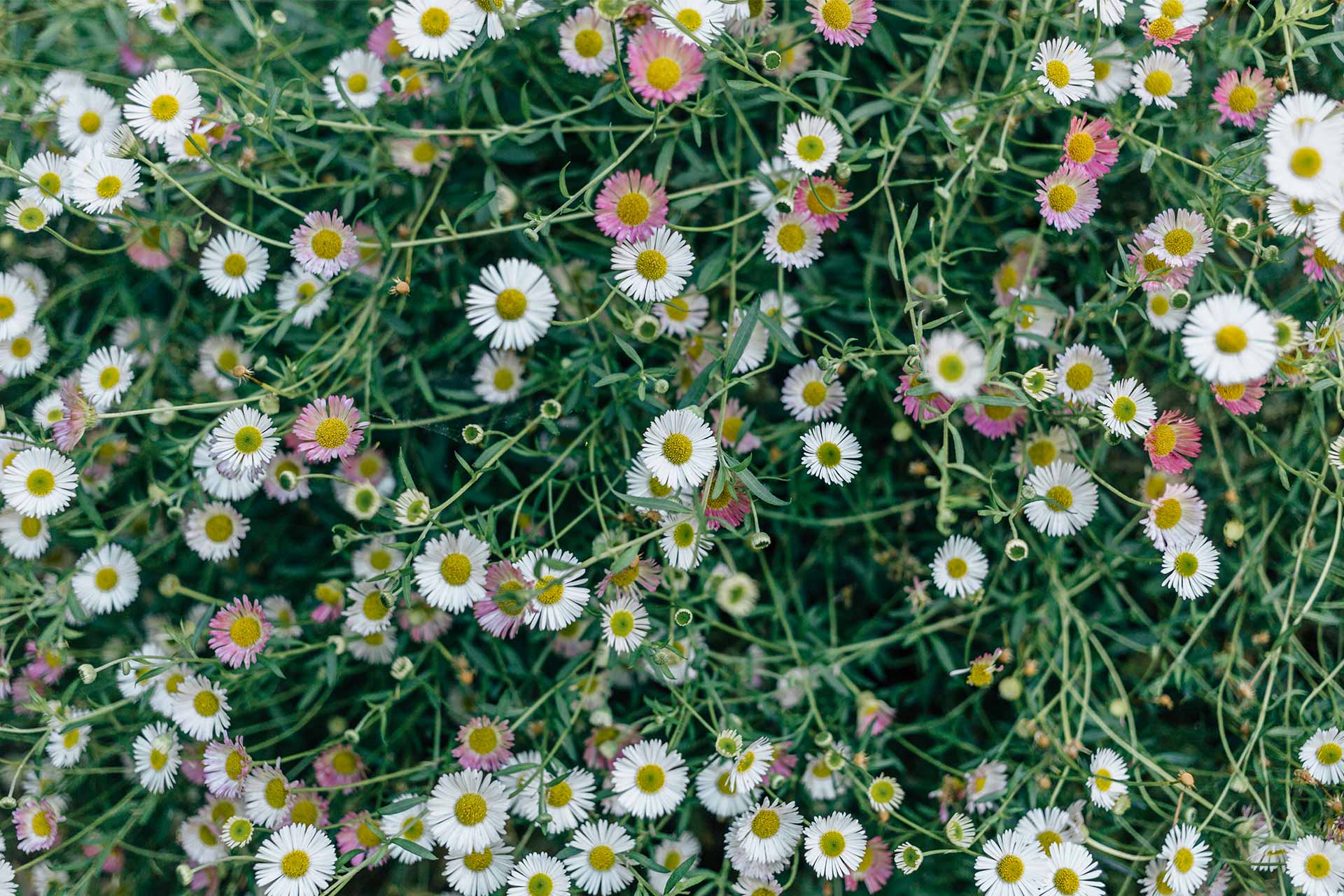
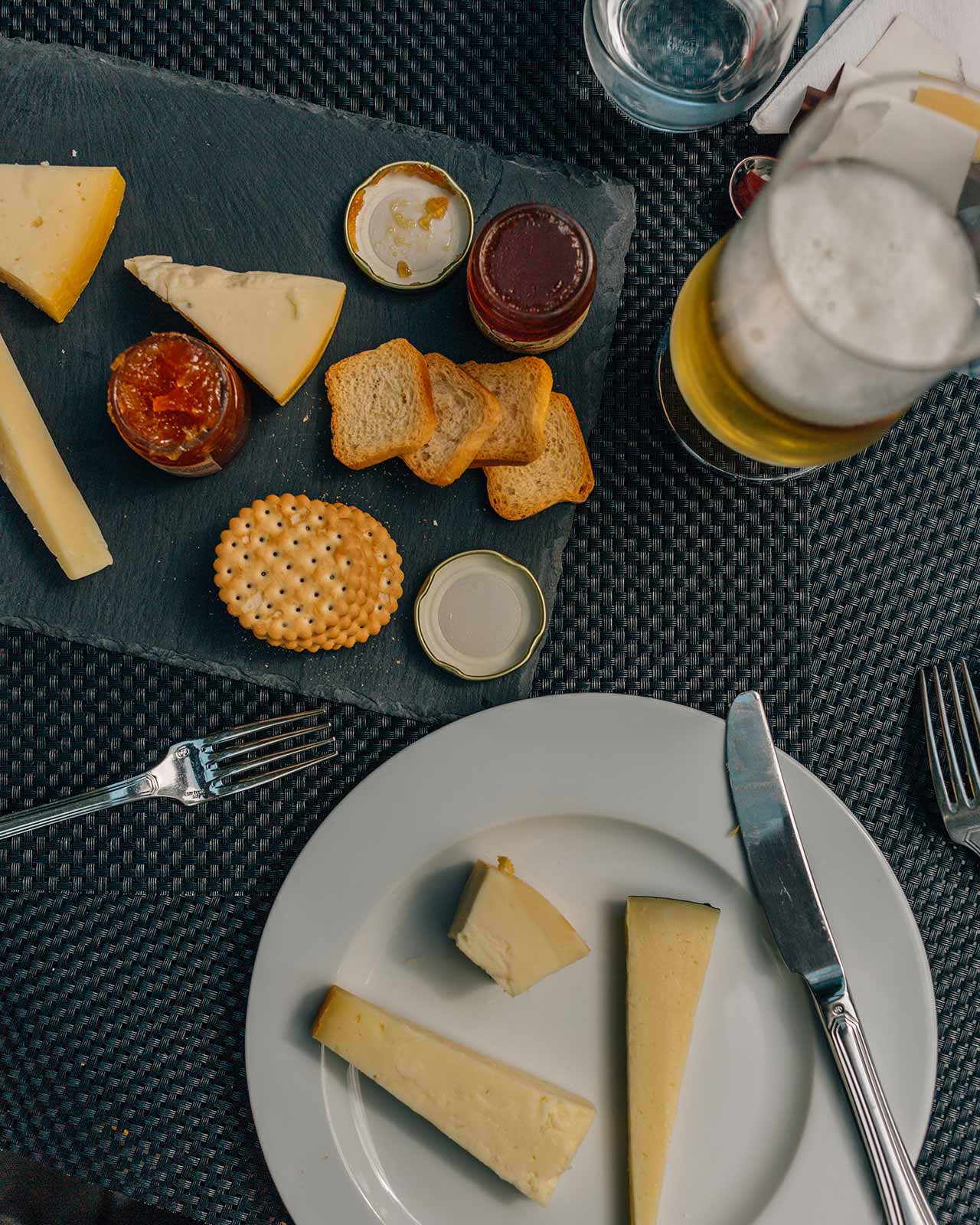
Overlooking the gardens is the grand hotel of the area. We opted to enjoy a long, late afternoon lunch on the hotel terrace.
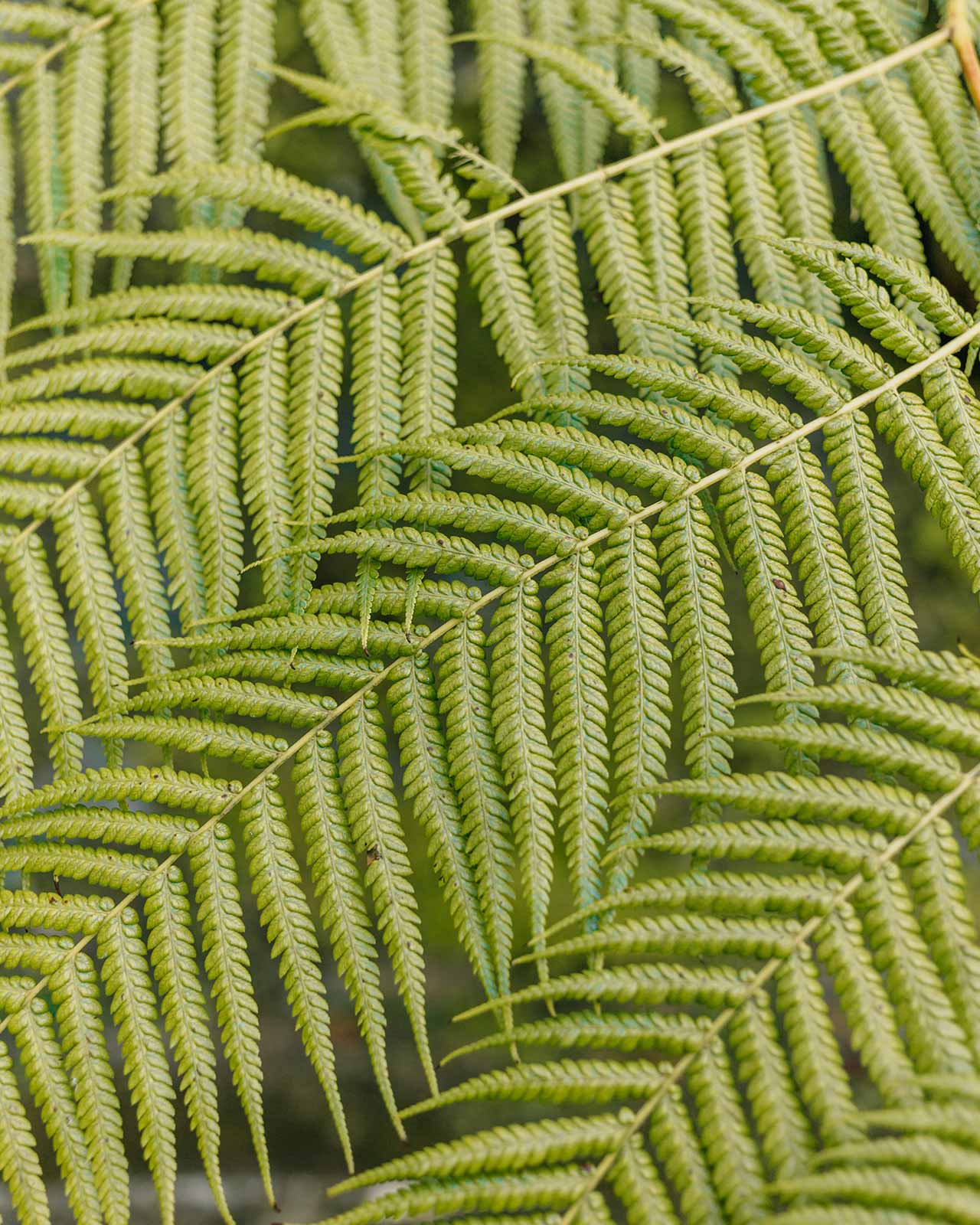
In the park we swam, walked, swam, and walked a bit more. The park grounds condense a wide variety of plant life found on the island, and we ended our afternoon thermal spa day with tea and snacks at the hotel overlooking the park. We felt more exhausted than we had imagined from being in the hot springs all day, and we forcefully made our way back to our beds for a late nap.
June 1
Day 5
Boca de Cena
Gorreana Tea Factory is about a 15 minute drive from Furnas. The Azores claim to have the only tea plantation in Europe. While I wouldn’t recommend the Azorean teas we tasted on the trip, the fields themselves were beautiful: condensed serpentine hedges of grass pressed together. Tea farms look like a French formal garden squished into tight terraced rows. I didn’t realize how much they prune tea plants: cut very close to the branch so that new leaves can grow and be picked. This must be what a “flush” is when tea is referred to as first flush, second, and so-on. Each flush may correspond to a cycle of picking and pruning. No one bothered us as we walked through the tea farm. A group of men were sitting under a large tree toward the back enjoying lunch. It was that kind of day. I couldn’t tell if they worked at the farm or just found the spot to by idyllic, and nobody else seemed to mind.
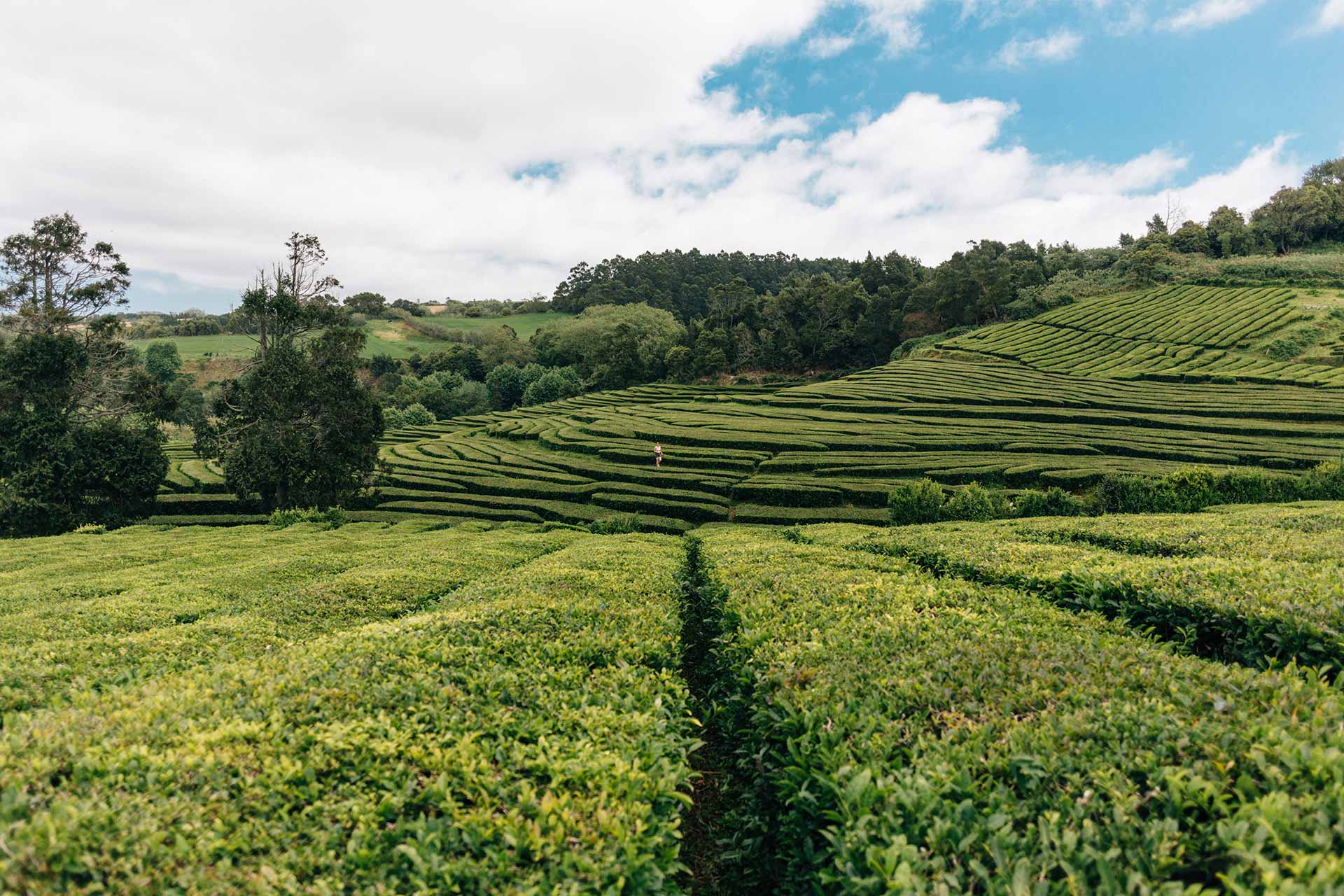
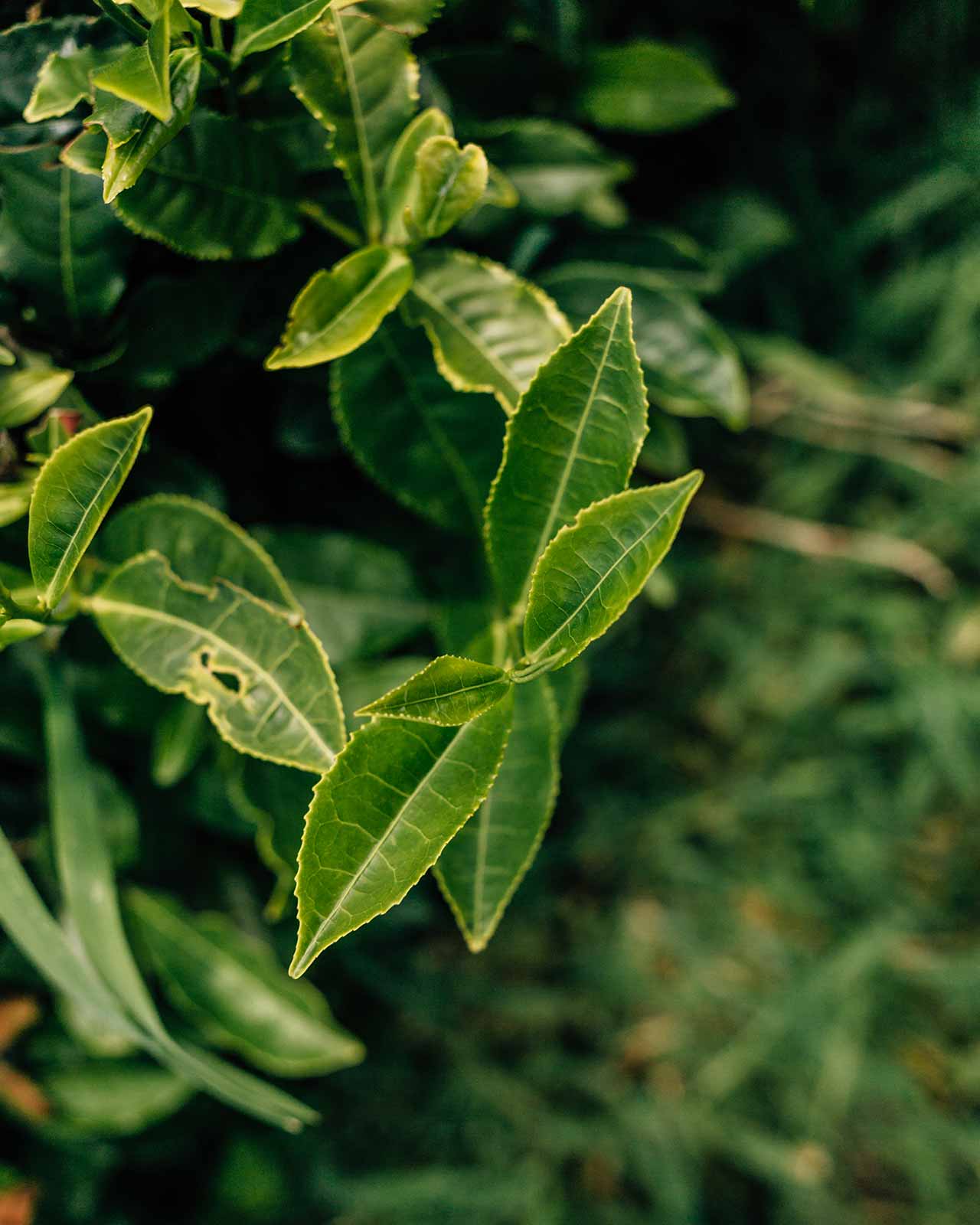
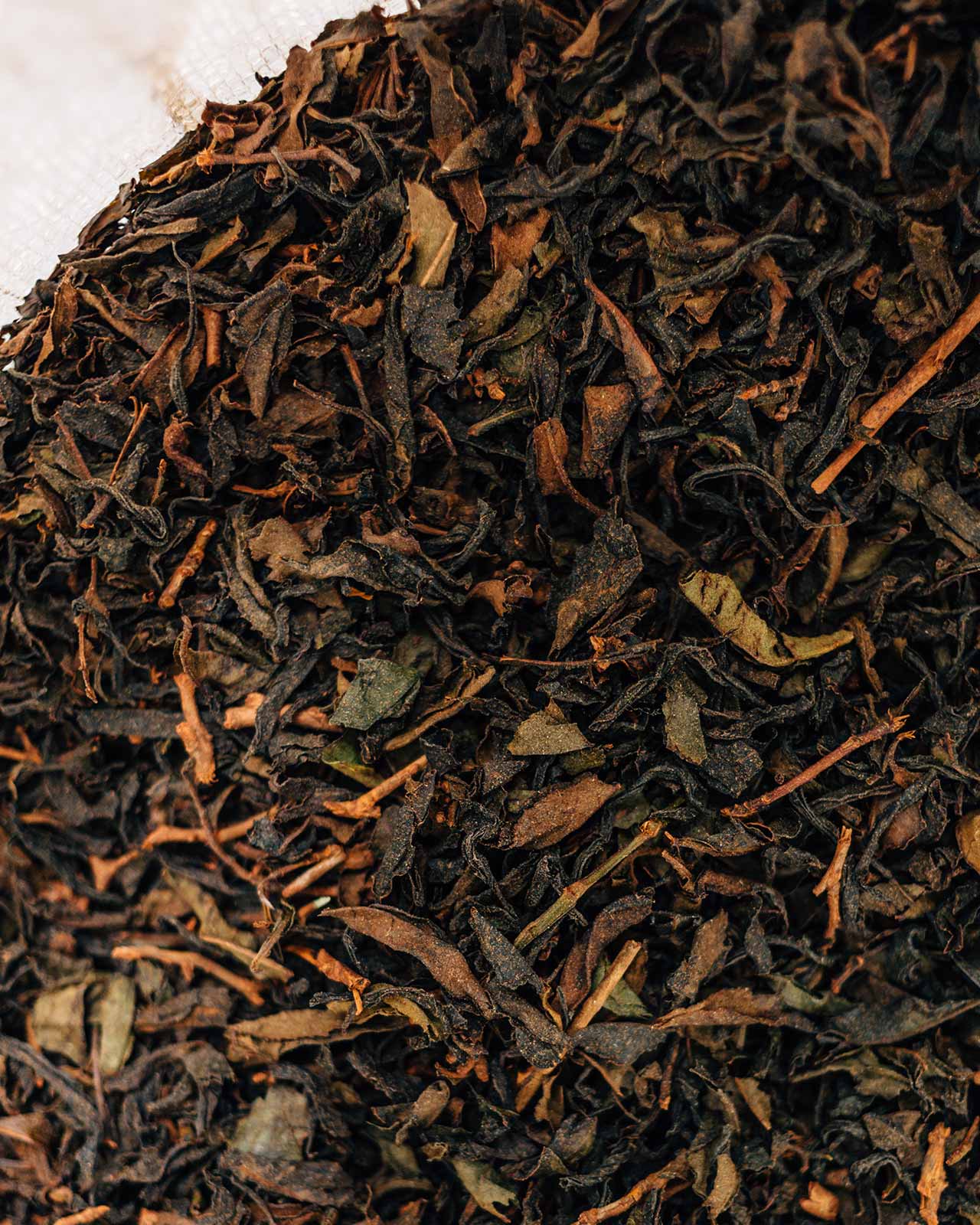
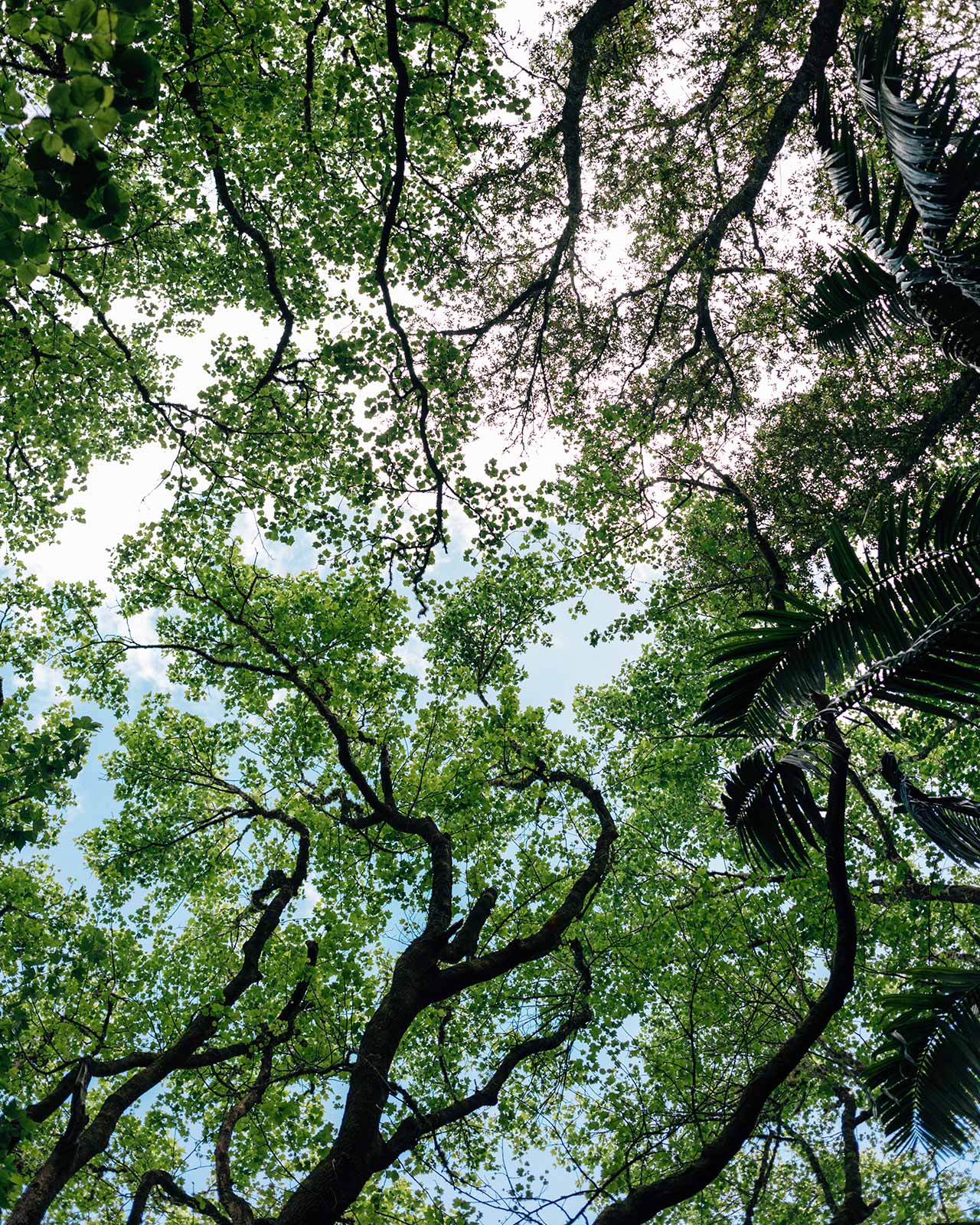
As we left Furnas, we headed towards the tea fields of the island. Gorreana Tea Factory is a short drive north of Furnas or east of Ribeira Grande.

We had a long drive ahead of us. “Long” in the Azorean sense: nearly two hours. We took the car on a drive along the northern coast; a stop at the park of Ribeira dos Caldeirões (where a famous waterfall tumbles down a short cliff); stopping in Nordeste on the far eastern side of the island; continuing down the eastern coast to the southern edge; and finally looping back through the cities of Povoação and Vila Franca do Campo; and ending up in the main city of Ponta Delgada. With that, we had circum-drove around the entire island.
The eastern side of the Island of São Miguel is much less developed than the rest. Food options are limited and towns are sleepy and quiet. The main draw are the many lookout points along the drive.
In Nordeste, we stopped for stamps for postcard writing. The afternoon heat hurried us back into our car and down the eastern coast.
At the lookout of Ponta do Sossego, we spotted due south a secluded beach tucked against a nearly shear cliff. Ah, to be swimming in that water! From our high viewpoint, we could still see through pristine Atlantic water hundreds of feet below us down to the very rocks on the ocean floor. And if you could believe, there were people at this beach, Praia do Lombo Gordo. How, we wondered, did they manage to reach a beach surrounded by steep cliffes on all sides? We were too afraid to take the drive down the cliff edge and didn’t want to bother walking it either. Yet the reward may very well be worth the trouble.

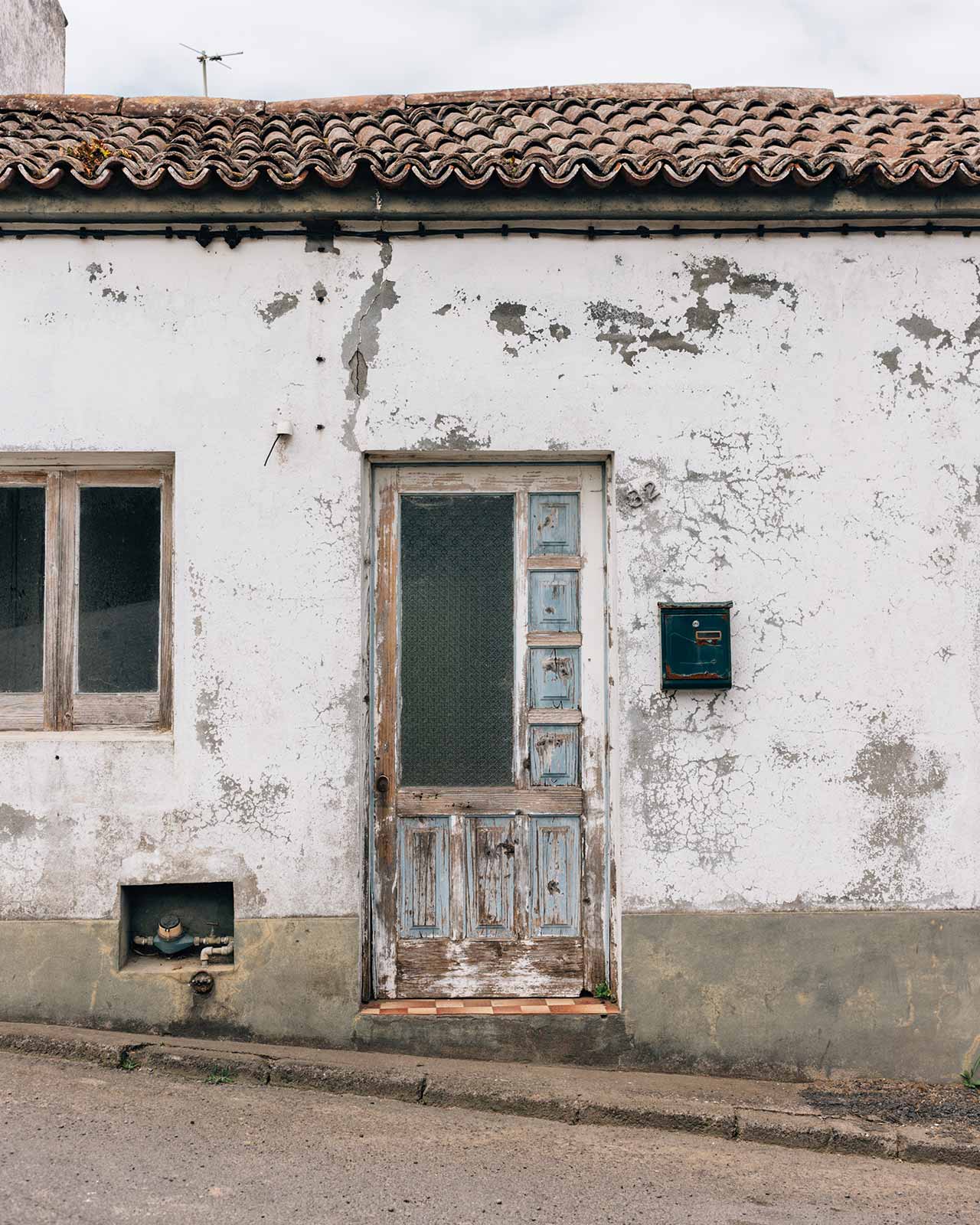
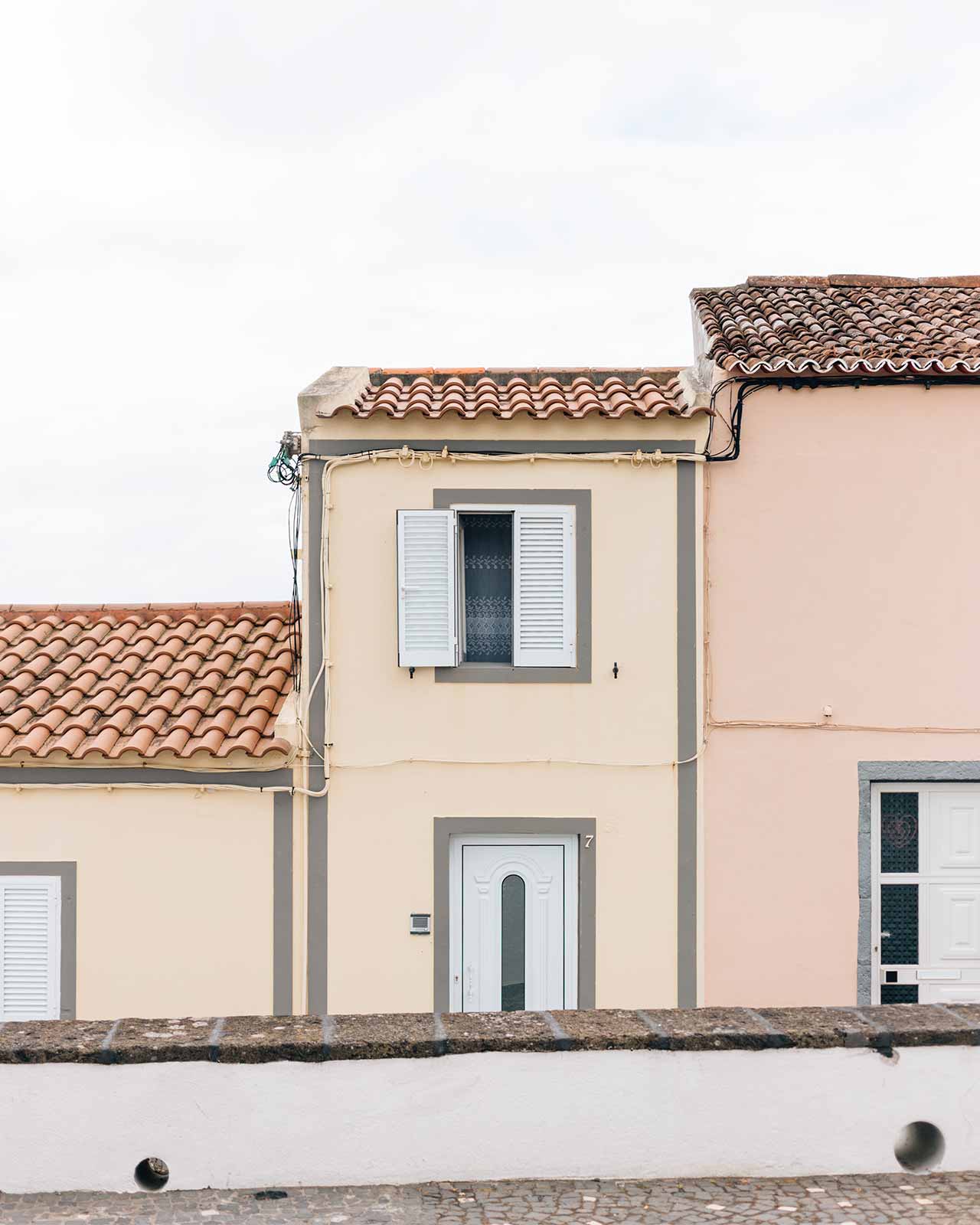
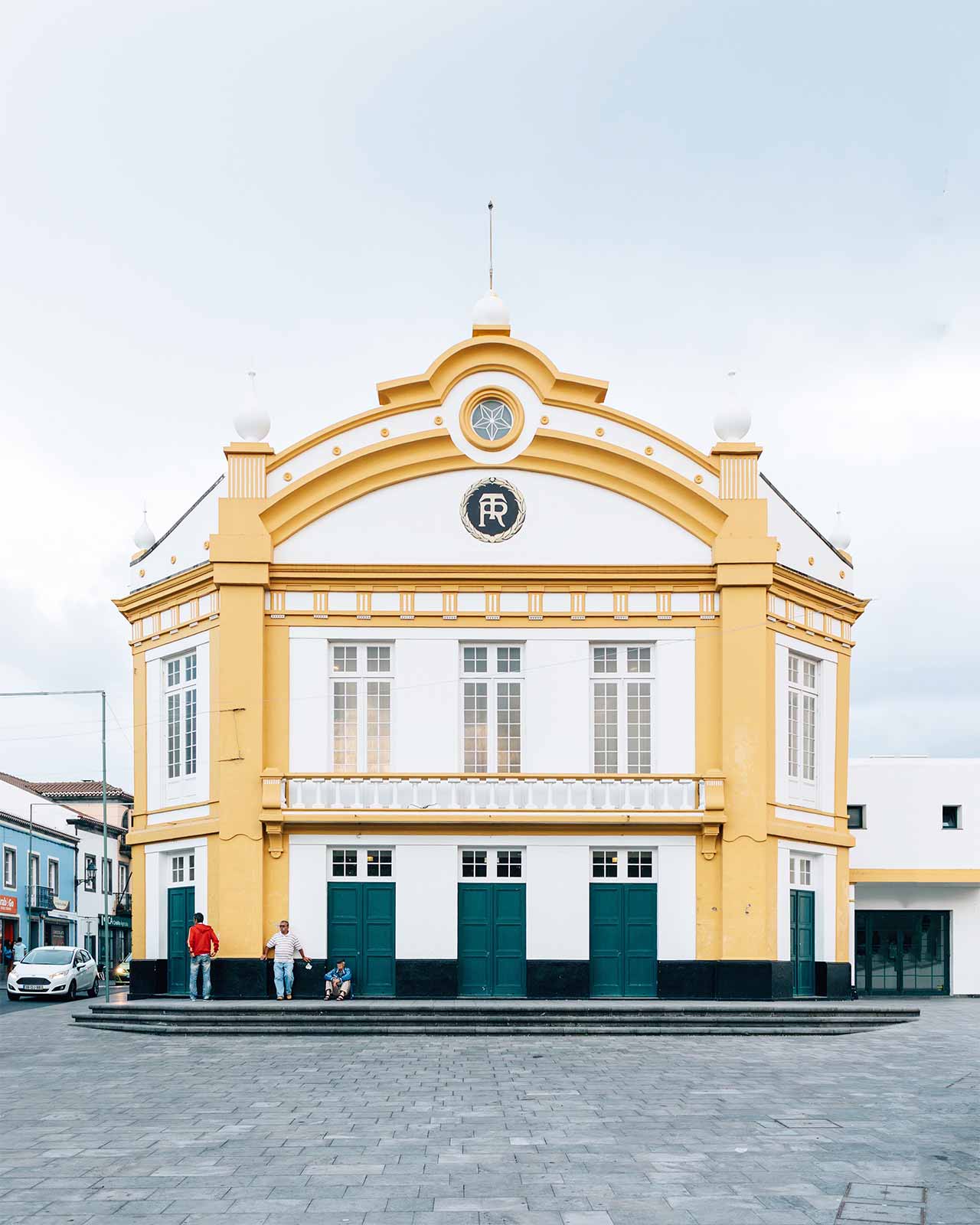
Teatro Ribeiragrandense in Ribeira Grande.

A main church facing the square in Ribeira Grande.
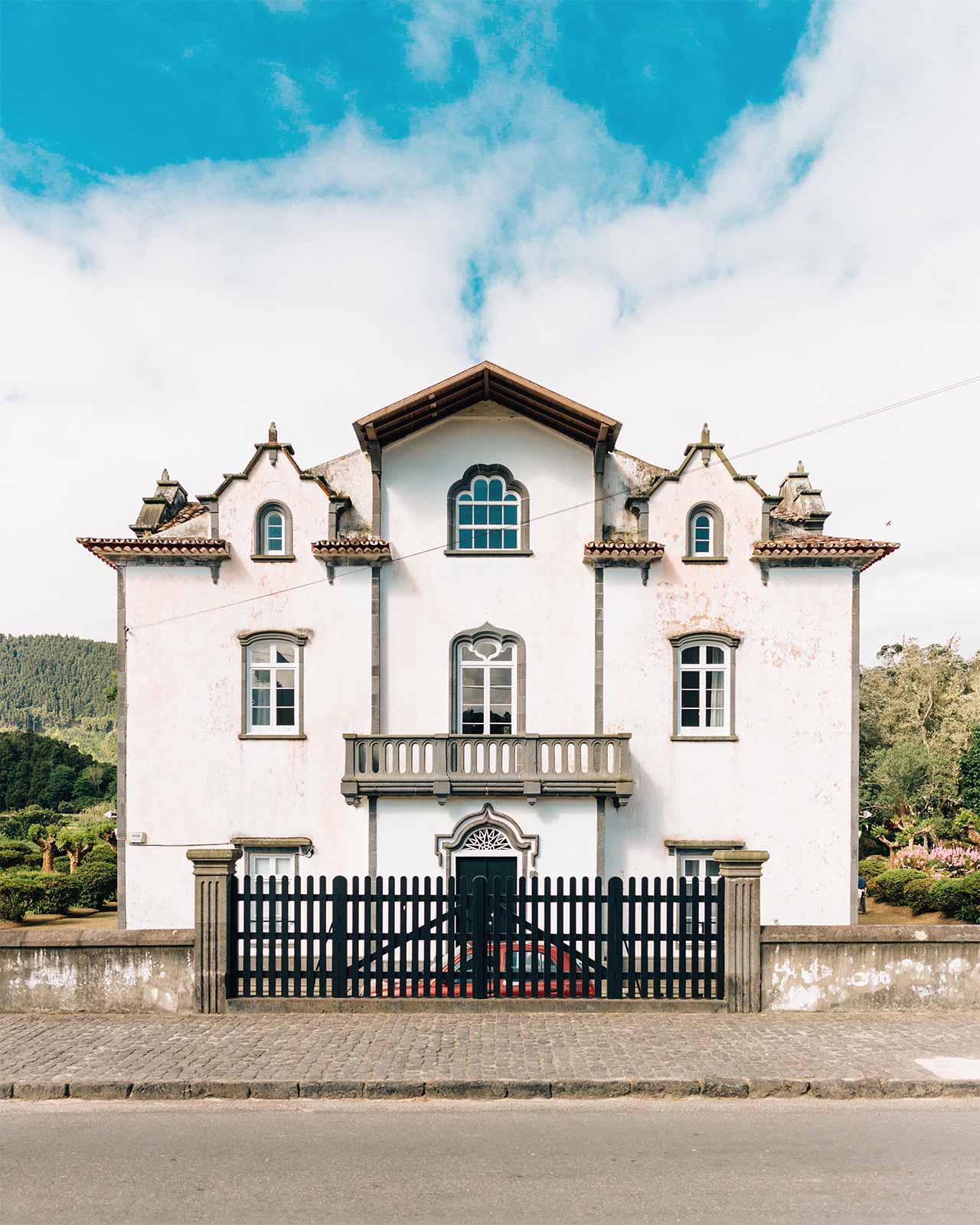
Casa Grande in the parish of Lagoa das Sete Cidades.
The road that passes the eastern side of the island runs through Furnas. And we indeed stopped once more in the city for a short break. We enjoyed this part of the island, and didn’t want to pass up it up. And onward we continued to the church at Vila Franca do Campo, where we could see the famous Ilhéu da Vila sunken island. The same place Rui recommended
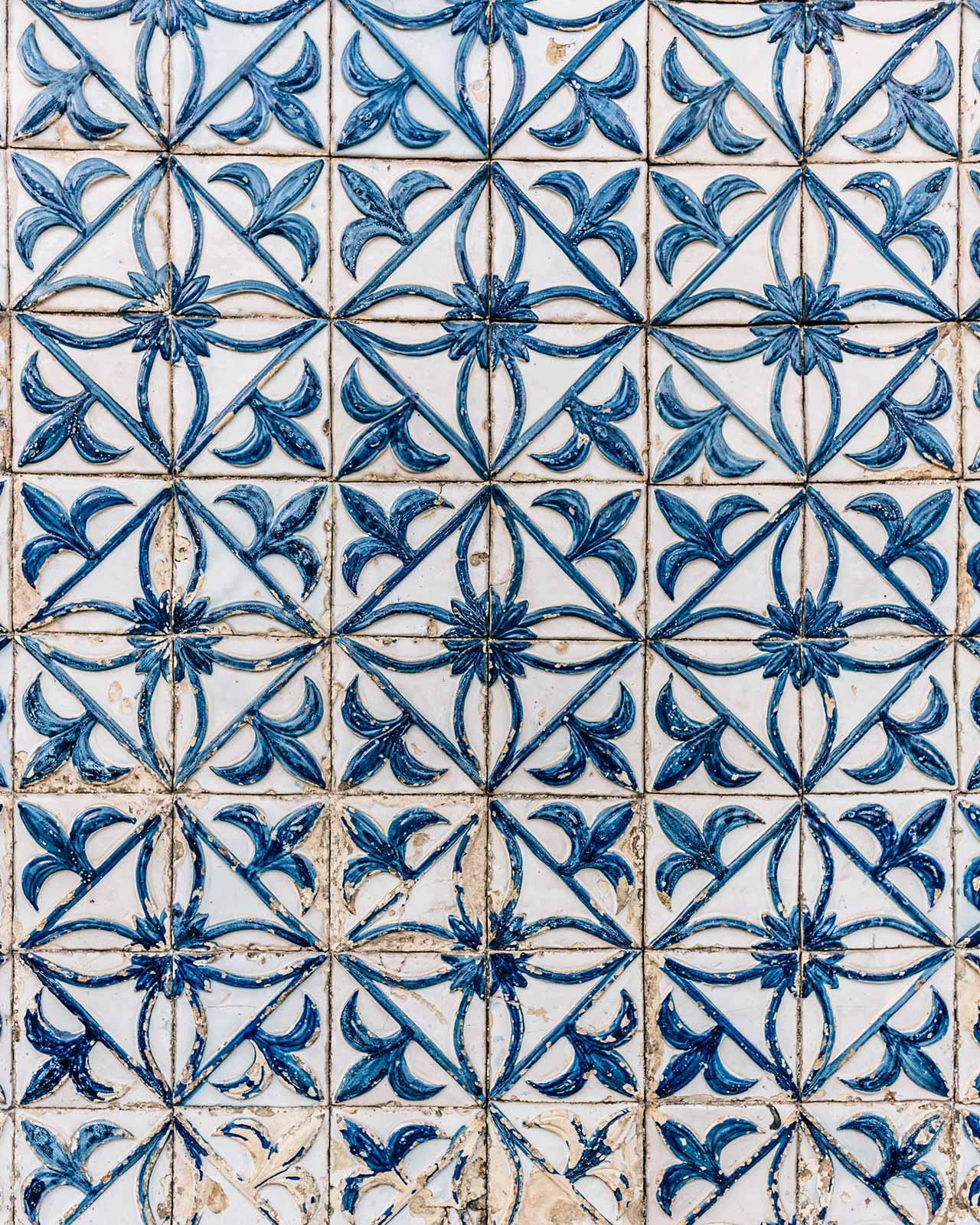
Tilework throughout the island on building walls.

Ponta Delgada is the main city and capital of the Azorean Archipelago. It was evening when we arrived and the sun was beginning it’s descent. The city was buzzing. After a day of driving through the secluded eastern shore, the sound of people was welcome.
We ate dinner at Boca de Cena, and it became our most beloved meal. We found it quite by accident nearby. As we walked in, the server hesitated but then seated us. Walking up to a restaurant — especially the handful of famous ones — is a good way to end up staying hungry for the night. Reservations are a must in Ponta Delgada, and our luck the first day would not last into the second and third.
Even so, the server of Boca de Cena turned out to be the chef as well. In fact, for the past seven or so years, he has run the restaurant solely himself. The place quickly filled up with languages pushing each other over the dinnertime conversation. I had roast beef and Nicole enjoyed the octopus.
June 2
Day 6
Postcards
We picked a sunny table by the window and sat down to write our postcards at Louvre Michaelense (off the main square). If only it were a telegram and read thusly:
“Dispatches from the Atlantic. Cups of local tea and green views abound. Please do not send help. We’re happy here.”
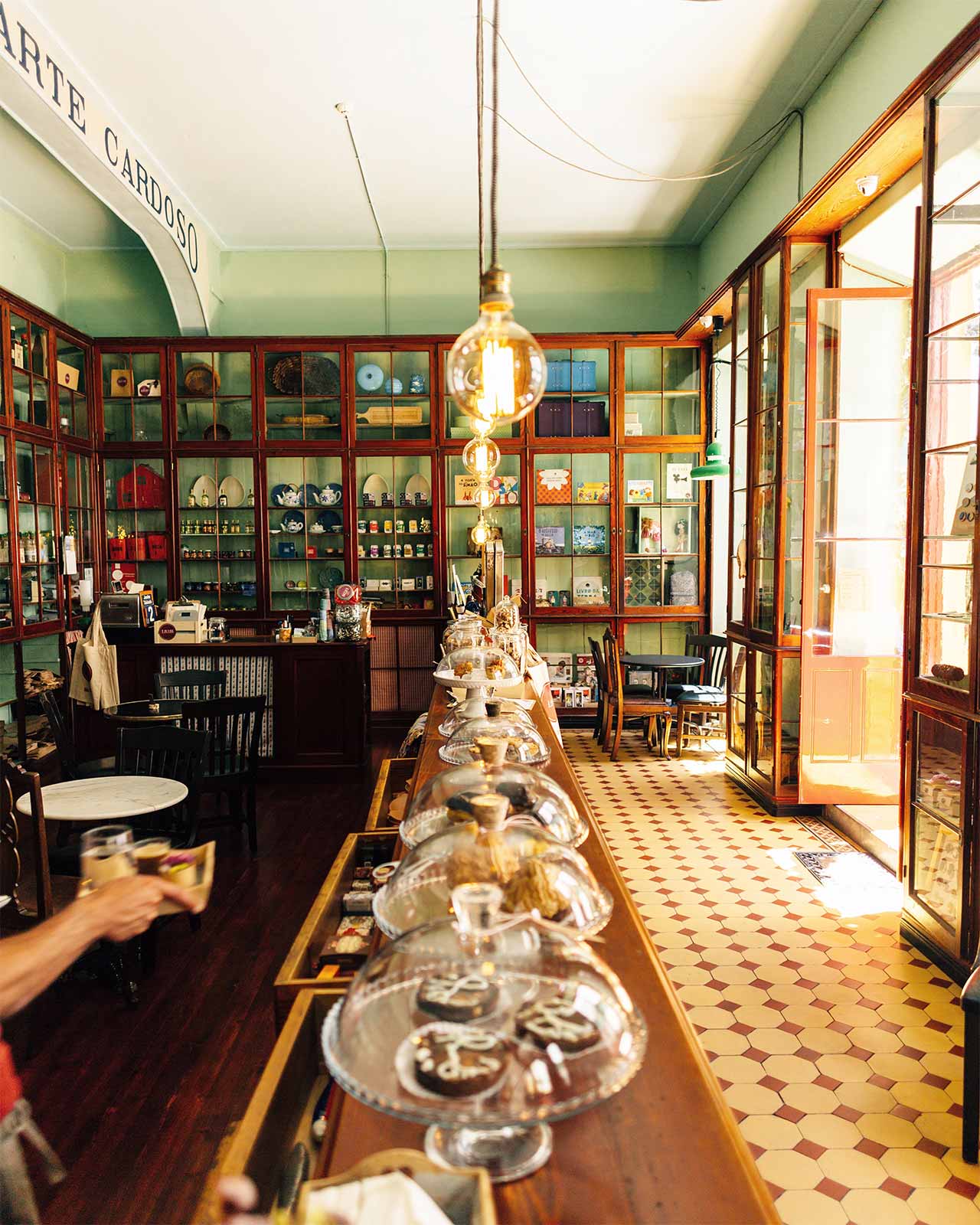


A moment for tea and writing at Louvre Michaelense.

But we did need help. In fact, later that night we ended up missing dinner because we didn’t make reservations. And the next night, a similar scenario: our first, second, third options were all booked. The culinary scene in Ponta Delgada is split between only a few restaurants, and our stomachs certainly felt unfortunate at this fact.
June 3
Day 7
Miradouro da Boca do Inferno
The postcard view of the island, which I saw printed on postcards sent back home, is Miradouro da Boca do Inferno. It is a short dirt trail that climbs up a high point perched above the lakes of Sete Cidades. At sunset or sunrise, the green of the island and the blue of the ocean simmer up into the purple, gold, rose, and sulphur of the sky. We went into our car and drove up to the point. We had a few hours before sunrise and our timing would be perfect.
As we got closer and closer, the sky turned whiter and whiter. Clear blue was replaced by murky white. Fog collapsed over the mountains the higher we went until only a few feat were visible in front of us. I kept looking up wishing for a westerly wind to blow the fog away. Nicole parked the car and we took turns guessing which trail actually would lead us to the viewpoint. Dew began collecting immediately on the car.
We were inside a cloud. Next time, we would give ourselves more than once chance to see this vista. For now, it was back to the city on our last night.
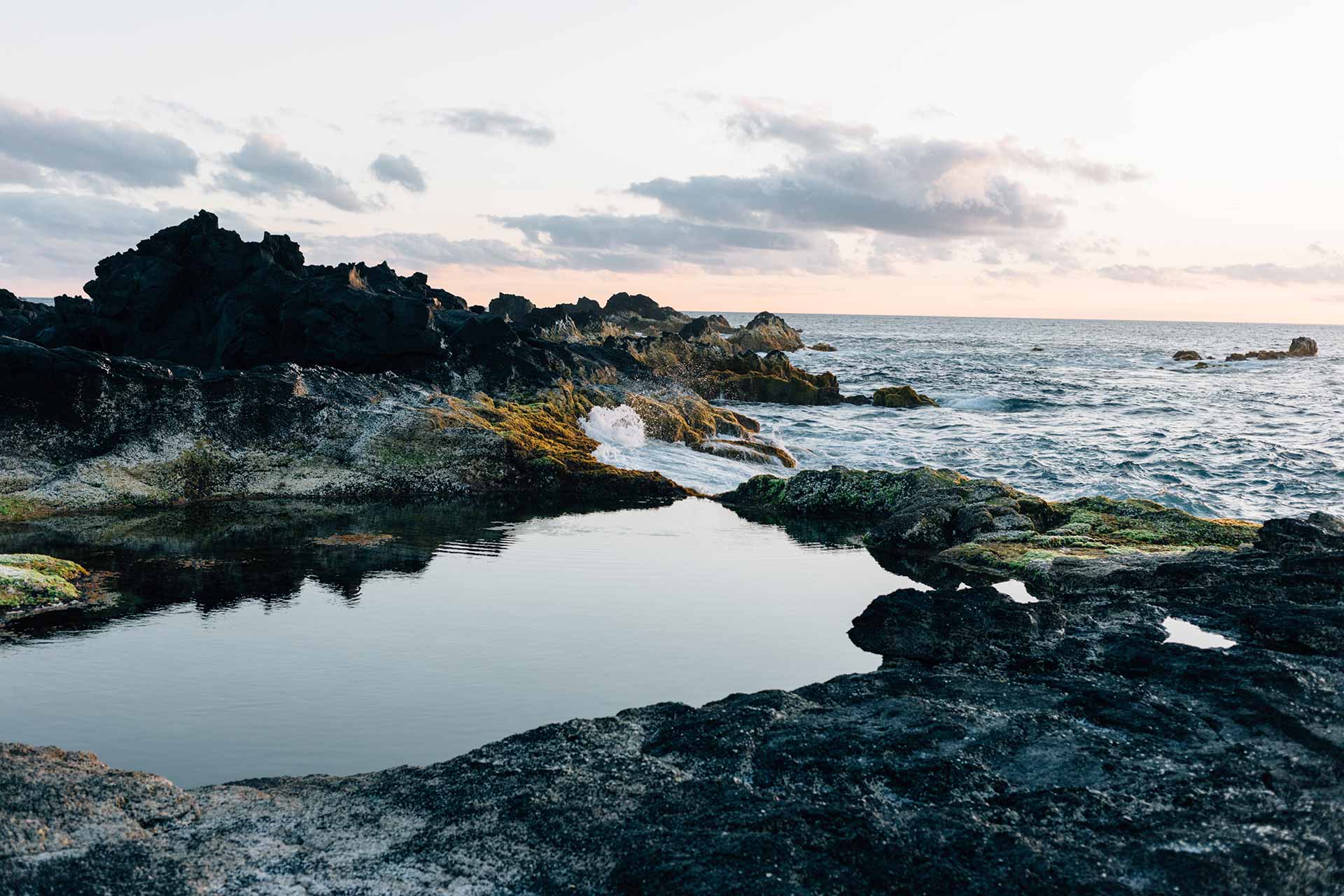
Public parks spread along the north western coast of Mosteiros, a popular place for viewing sunsets.
June 4
Day 8
Departure
Our seats on the plane were adjacent the emergency exit. As we flew above the island to take in the magnificence of the Azores, our only window was a 2-inch porthole at the very top of the emergency door. We wouldn’t see a single thing during takeoff. I closed my eyes instead and pictured the landscapes we saw and the trip we had. Those would do quite well I thought, and I drifted off to sleep.
How do I say?
- Hello
- Olá
- Good Morning
- Bom dia
- Good Night
- Boa noite
- Thank you
- Obrigado (males) or Obrigada (females)
- Yes
- Sim
- No
- Não (now-uh)
- Excuse me
- Desculpe (des kuw pe)
- Sorry
- Desculpe (des kuw pe)
Where to go
All places above are also placed on this map, as well as a few places not described above.